
AIS-catcher-for-Android
Android AIS receiver for RTL SDR dongles, Airspy R2, Airspy Mini, Airspy HF+ and TCP (RTL-TCP and SpyServer). Output is send via UDP and visualized on the built-in map
Stars: 94
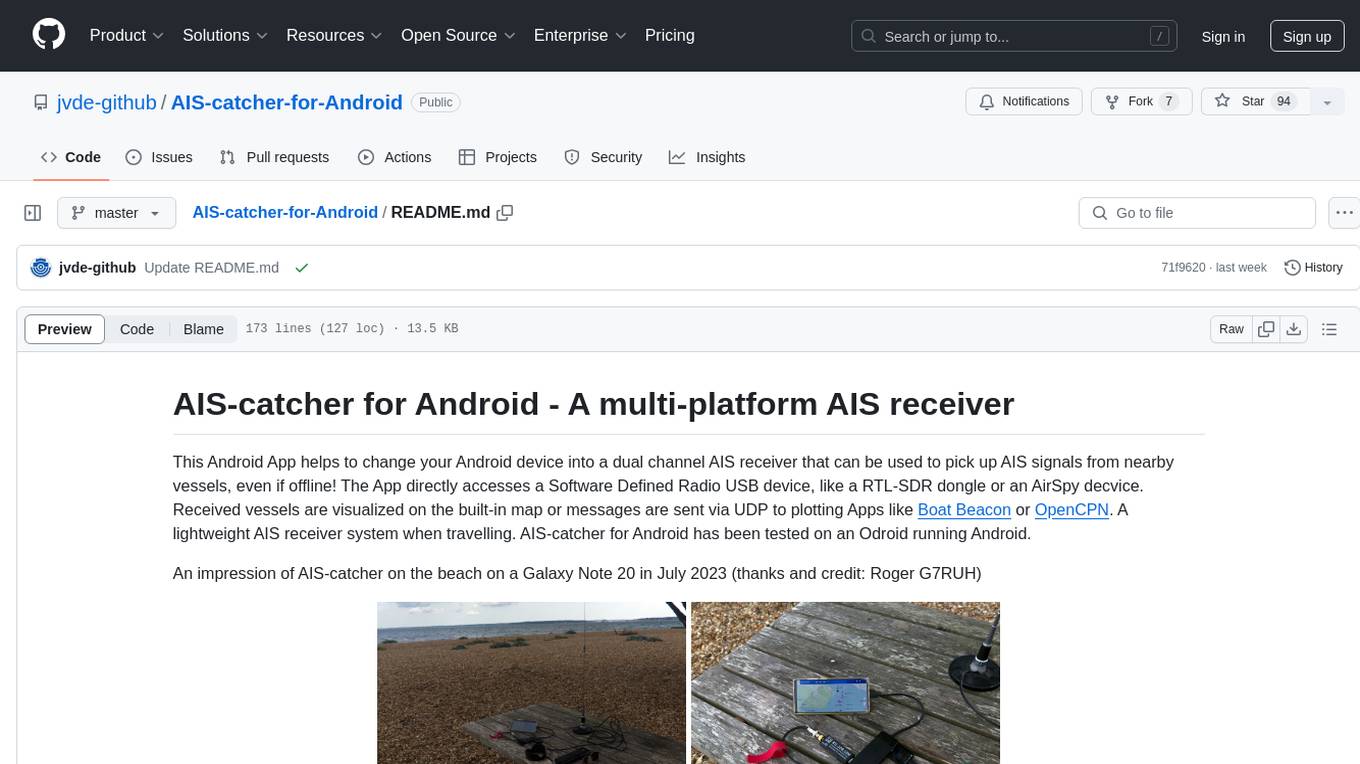
AIS-catcher for Android is a multi-platform AIS receiver app that transforms your Android device into a dual channel AIS receiver. It directly accesses a Software Defined Radio USB device to pick up AIS signals from nearby vessels, visualizing them on a built-in map or sending messages via UDP to plotting apps. The app requires a RTL-SDR dongle or an AirSpy device, a simple antenna, an Android device with USB connector, and an OTG cable. It is designed for research and educational purposes under the GPL license, with no warranty. Users are responsible for prudent use and compliance with local regulations. The app is not intended for navigation or safety purposes.
README:
This Android App helps to change your Android device into a dual channel AIS receiver that can be used to pick up AIS signals from nearby vessels, even if offline! The App directly accesses a Software Defined Radio USB device, like a RTL-SDR dongle or an AirSpy decvice. Received vessels are visualized on the built-in map or messages are sent via UDP to plotting Apps like Boat Beacon or OpenCPN. A lightweight AIS receiver system when travelling. AIS-catcher for Android has been tested on an Odroid running Android.
An impression of AIS-catcher on the beach on a Galaxy Note 20 in July 2023 (thanks and credit: Roger G7RUH)
Here you can find a link to the APK file for latest Edge version or visit the Google Play Store. The engine and visualizations are based on AIS-catcher. *** NOTE: The Google Play Store introduced new requirements for developers around publishing personal details which we cannot implement. Hence the app will be no longer available in the Play Store from mid August. The APK can still be downloaded here. ***
AIS-catcher had a recent overhaul. The instructions below still are relevant but the visualization of the results is now based on the same code as the AIS-catcher web interface. The instructions will be updated in due course.
The requirements to receive AIS signals are: a RTL-SDR dongle (or alternatively an AirSpy Mini/R2/HF+), a simple antenna, an Android device with USB connector and an OTG cable to connect the dongle with your Android device. AIS-catcher only receives and processes signals and then forwards the messages over UDP or visualizes them on the build-in map (internet connection required). And one more thing, you need to be in a region where there are ships broadcasting AIS signals, e.g. near the water.
- Improved functionality if offline (map tiles only to the extent cached by previous usage)
- Fireworks mode for map, have a look!
- APK for latest version always available for download, see below
- Support for RTL-SDR Blog V4
- Tab with realtime NMEA lines as it is received
AIS-catcher for Android is created for research and educational purposes under the GPL license.
This program comes with ABSOLUTELY NO WARRANTY; This is free software, and you are welcome to redistribute it
under certain conditions. For details see the project page.
It is a hobby project and not tested and designed for reliability and correctness. You can play with the software but it is the user's responsibility to use it prudently. So, DO NOT rely upon this software in any way including for navigation and/or safety of life or property purposes. There are variations in the legislation concerning radio reception in the different administrations around the world. It is your responsibility to determine whether or not your local administration permits the reception and handling of AIS messages from ships and you can have this App on your phone. It is specifically forbidden to use this software for any illegal purpose whatsoever. The software is intended for use only in those regions where such use is permitted.
You can download AIS-catcher-for-Android in the Release section in the form of an APK-file. There are various resources on how to install an APK file available on the web.
Some Android manufacturers prefer battery life over proper functionality of Apps which might be particular relevant for a SDR AIS receiver. You can find tips for various devices at https://dontkillmyapp.com/.
For a video of a field test of an early version see YouTube. Below we have included a Getting Started tutorial when running with a RTL-SDR dongle. The steps for the AirSpy and TCP connections are very similar. Please notice that your phone or tablet has to power the USB device and run the decoding algorithm and this will be a drain on your battery. When sending UDP NMEA lines over the network or decoding from TCP (SpyServer or RTL-TCP) this will require serious network traffic. Advice is to do this when connected via WiFi. Finally, the computationally intensive nature of AIS decoding requires the phone to give the Application sufficient run time. On some phones Android might restrict this and some tuning of the phone settings might be required.
The main screen of AIS-catcher is as follows:
The tabs section at the top provides access to the main statistics and information when AIS-catcher is running whereas the bottom navigation bar has the buttons to start/stop the receiver, clear the logs/statistics and select the source device you want to use for reception.AIS-catcher is a simple receiver that decodes messages and can send the messages from ships onward to specialized plotting apps via UDP.
In this step we are going to set up the outward connections to BoatBeacon and OpenCPN. For this we will use port 10110 for BoatBeacon and 10111 for OpenCPN. Press the 3 vertical dots on the top right and select the Setting option. Scroll to the bottom and activate the two UDP output connections via the switch and set the parameters as follows:
Next we start OpenCPN and click on Options (top left icon) and choose the Connections tab. We need to add a Network connection using UDP at address 0.0.0.0 dataport 10111.
You could initially select Show NMEA Debug Window as extra option which will give you a window in OpenCPN that shows all incoming NMEA messages it receives from AIS-catcher. This could be helpful
debugging a connection issue between the receiver and OpenCPN. The Connections tab will look something like:
Next we connect AIS-catcher to the RTL-SDR dongle. By default the user needs to give applications the rights to use a USB device. For this connect the dongle with your Android device using the OTG cable (if needed) and, if all is well, you should be asked if AIS-catcher can get access. With Dutch language settings (sorry) this should look like:
Accept the request and consider giving AIS-catcher permanent access to the device so this step can be skipped in the future.
Next go back to the Settings menu via the 3 vertical dots on the main screen and set up the RTL-SDR settings:
These settings should be ok but don't forget to set the frequency correction in PPM if needed for your device. You can set the dongle settings at any point in time but they will only become active when a new run is started.
In the Main screen select the Source by clicking the right-most item in the bottom navigation bar. Select the RTL-SDR device:
The bottom navigation bar should show which device is currently active and will be used for AIS reception.
In the main screen now click Start on the left in the bottom navigation bar. This starts the run and a notification is given that a foreground service is started. The navigation tabs allow you to see different statistics during the run (like message count (STAT), messages from the receiver (LOG) and received NMEA lines (NMEA) ).
AIS-catcher will run as a foreground service so the app will continue to receive messages when closed. That's all there is to it. Have fun!
AIS-catcher for Android uses the following libraries:
libusb-1.0.26+: https://github.com/libusb/libusb
libusb is a library for USB device access from Linux, macOS, Windows, OpenBSD/NetBSD, Haiku and Solaris userspace. It is written in C (Haiku backend in C++) and licensed under the GNU Lesser General Public License version 2.1 or, at your option, any later version (see COPYING).
rtl-sdr: https://github.com/osmocom/rtl-sdr
Turns your Realtek RTL2832 based DVB dongle into a SDR receiver. Licensed under the GPL-2.0 license. Modified for Android to open devices with file descriptors: https://github.com/jvde-github/rtl-sdr.
airspyhf: https://github.com/airspy/airspyhf
This repository contains host software (Linux/Windows) for Airspy HF+, a high performance software defined radio for the HF and VHF bands. Licensed under the BSD-3-Clause license. Modified for Android to open devices with file descriptors: https://github.com/jvde-github/airspyhf.
airspyone_host: https://github.com/airspy/airspyone_host
AirSpy usemode driver and associated tools. Modified for file descriptors here: https://github.com/jvde-github/airspyone_host.
AIS-catcher: https://github.com/jvde-github/AIS-catcher
AIS receiver for RTL SDR dongles, Airspy R2, Airspy Mini, Airspy HF+, HackRF and SDRplay. Licensed under the GPGL license.
At the moment we don't collect any user data. This policy will vary per version so please check this policy for each release.
- More testing....
Application crashes when USB device is unplugged whilst in the source selection menu- Application should automatically switch to SDR source if not playing and device connected
-
Application crashes when AirSpy HF+ is disconnected (seems to be a more general issue)Solved. Shorter timeouts when connecting to RTL-TCP- WiFi-only check in case: RTL-TCP streaming or UDP NMEA broadcast to other machines
-
Wakelocks andWiFi performance settings, etc... Add sync locks for updates- Count buffer under- and over-runs
-
Simple map- radar view Simple graphs with statisticsStart button not properly reset when receiver stops due to timeout?
For Tasks:
Click tags to check more tools for each tasksFor Jobs:
Alternative AI tools for AIS-catcher-for-Android
Similar Open Source Tools

AIS-catcher-for-Android
AIS-catcher for Android is a multi-platform AIS receiver app that transforms your Android device into a dual channel AIS receiver. It directly accesses a Software Defined Radio USB device to pick up AIS signals from nearby vessels, visualizing them on a built-in map or sending messages via UDP to plotting apps. The app requires a RTL-SDR dongle or an AirSpy device, a simple antenna, an Android device with USB connector, and an OTG cable. It is designed for research and educational purposes under the GPL license, with no warranty. Users are responsible for prudent use and compliance with local regulations. The app is not intended for navigation or safety purposes.
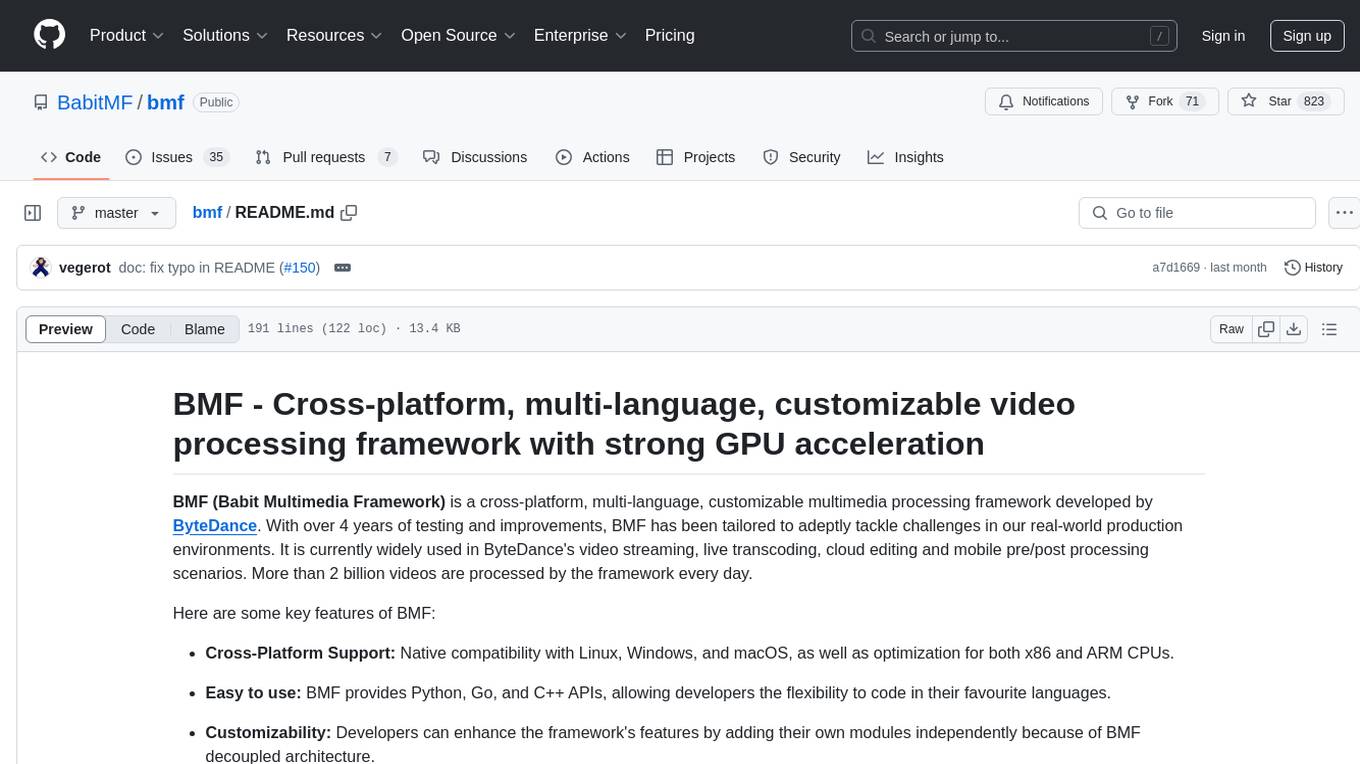
bmf
BMF (Babit Multimedia Framework) is a cross-platform, multi-language, customizable multimedia processing framework developed by ByteDance. It offers native compatibility with Linux, Windows, and macOS, Python, Go, and C++ APIs, and high performance with strong GPU acceleration. BMF allows developers to enhance its features independently and provides efficient data conversion across popular frameworks and hardware devices. BMFLite is a client-side lightweight framework used in apps like Douyin/Xigua, serving over one billion users daily. BMF is widely used in video streaming, live transcoding, cloud editing, and mobile pre/post processing scenarios.
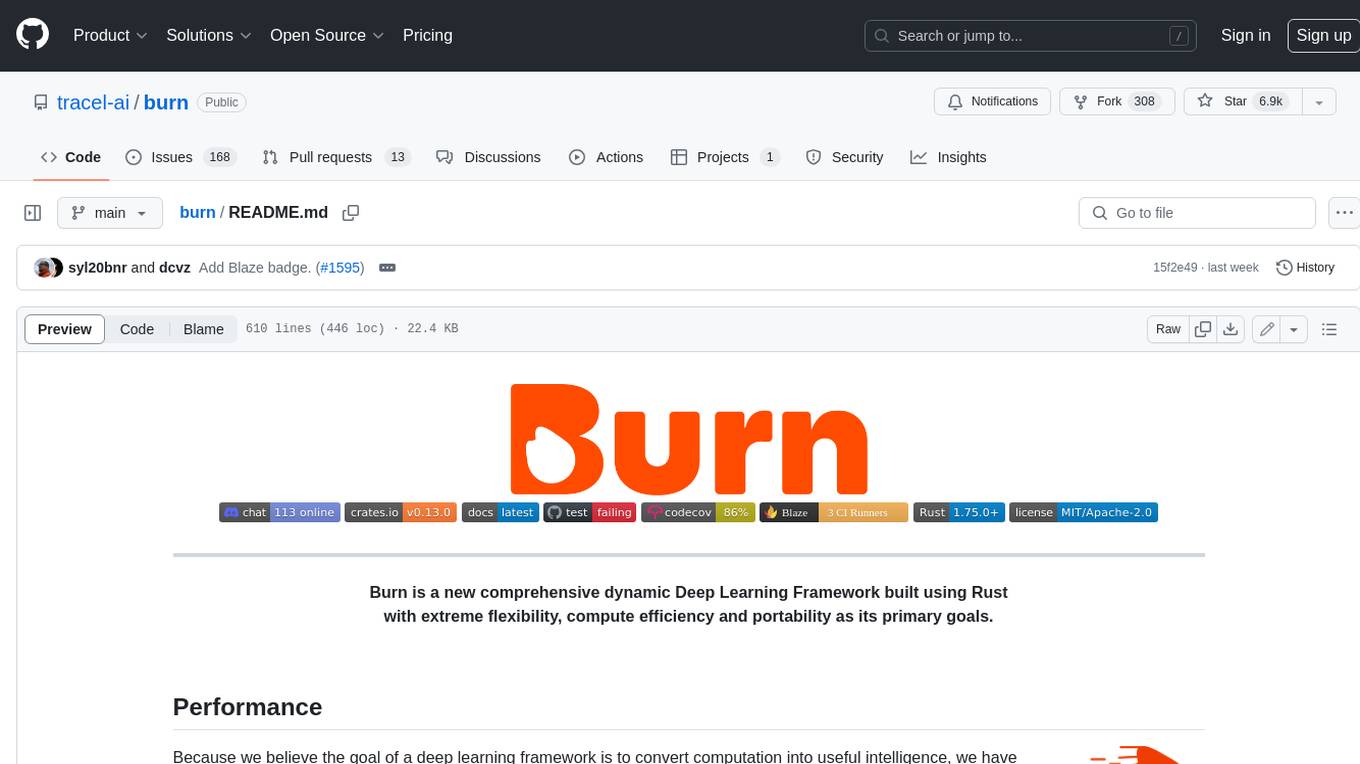
burn
Burn is a new comprehensive dynamic Deep Learning Framework built using Rust with extreme flexibility, compute efficiency and portability as its primary goals.
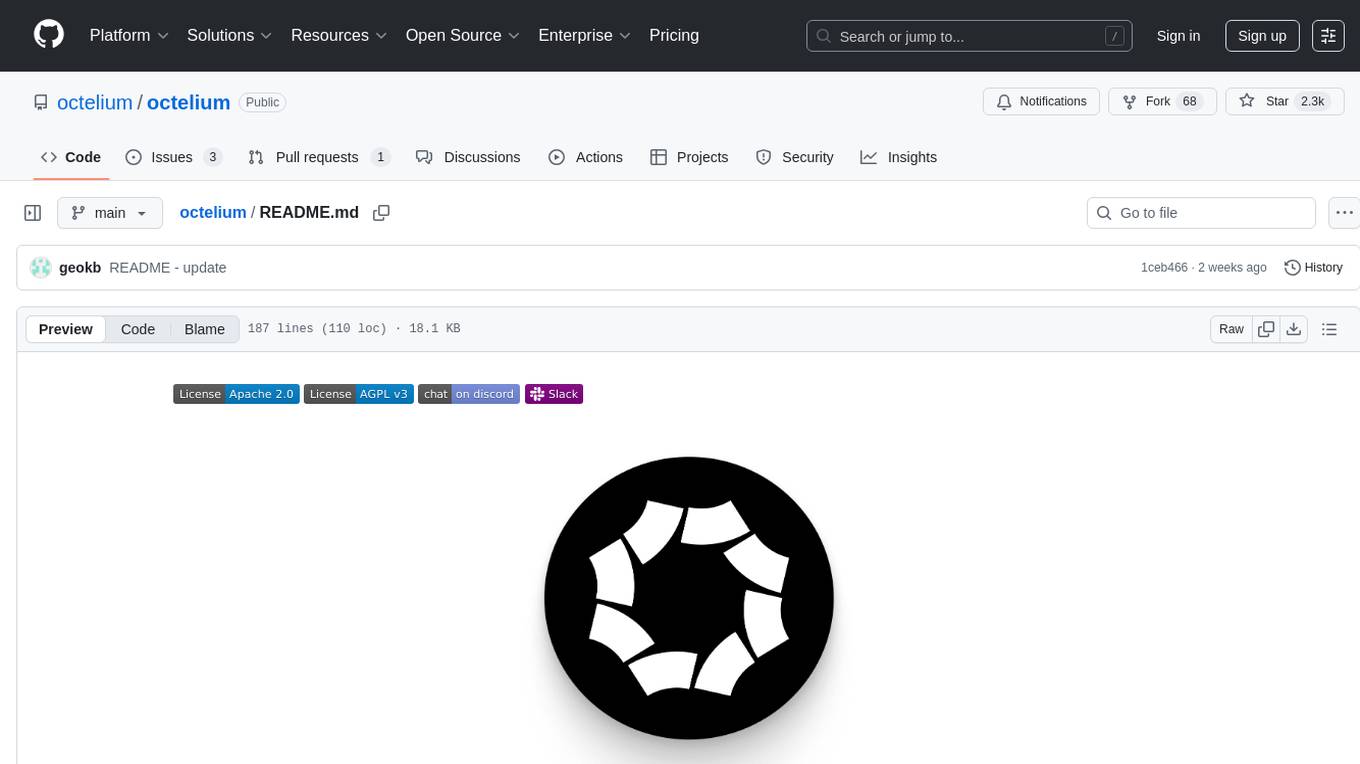
octelium
Octelium is a free and open source, self-hosted, unified zero trust secure access platform that operates as a modern zero-config remote access VPN, a comprehensive Zero Trust Network Access (ZTNA)/BeyondCorp platform, an ngrok/Cloudflare Tunnel alternative, an API gateway, an AI/LLM gateway, a PaaS-like platform, a Kubernetes gateway/ingress, and a homelab infrastructure. It provides scalable zero trust architecture for identity-based, application-layer aware secure access via private client-based access over WireGuard/QUIC tunnels and public clientless access, with context-aware access control. Octelium offers dynamic secretless access, fine-grained access control, identity-based routing, continuous strong authentication, OpenTelemetry-native auditing, passwordless SSH, effortless deployment of containerized applications, centralized management, and more. It is open source, designed for self-hosting, and provides a commercial license option for businesses.
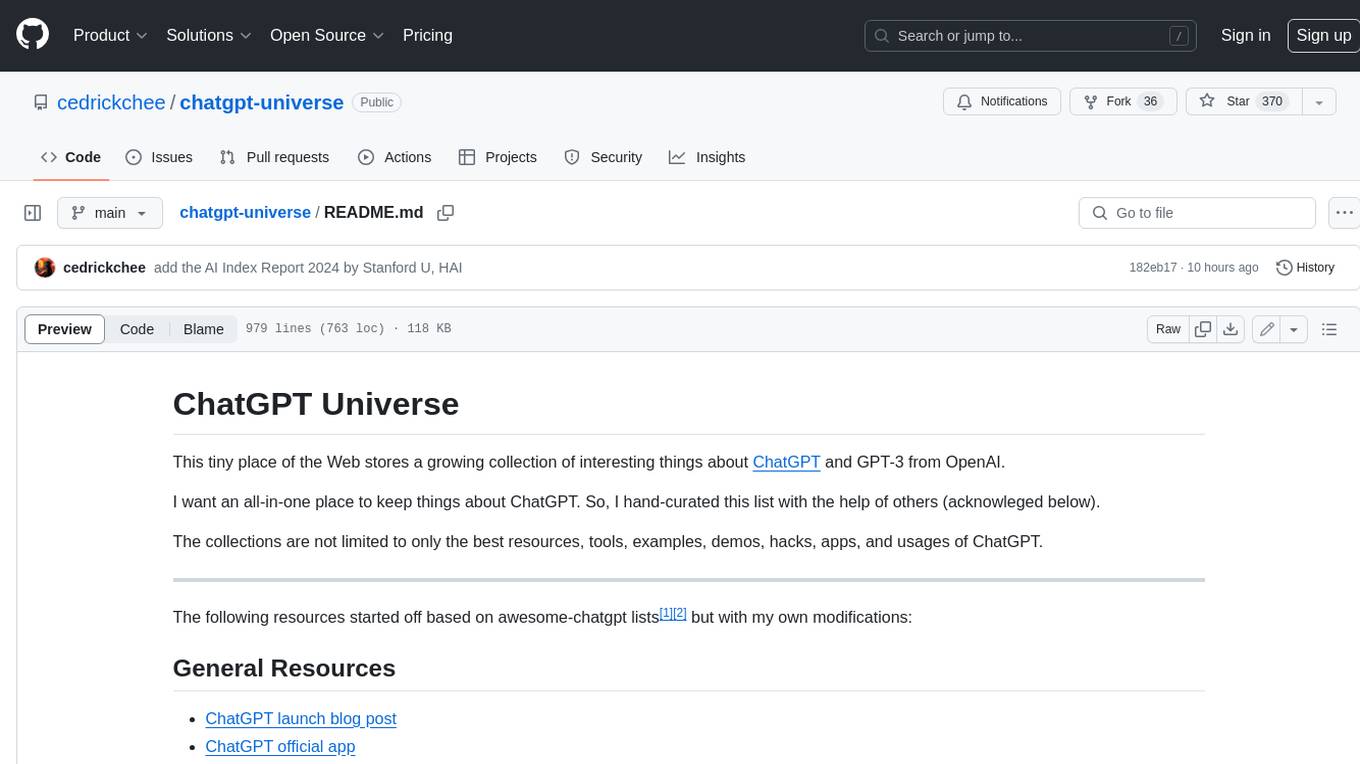
chatgpt-universe
ChatGPT is a large language model that can generate human-like text, translate languages, write different kinds of creative content, and answer your questions in a conversational way. It is trained on a massive amount of text data, and it is able to understand and respond to a wide range of natural language prompts. Here are 5 jobs suitable for this tool, in lowercase letters: 1. content writer 2. chatbot assistant 3. language translator 4. creative writer 5. researcher
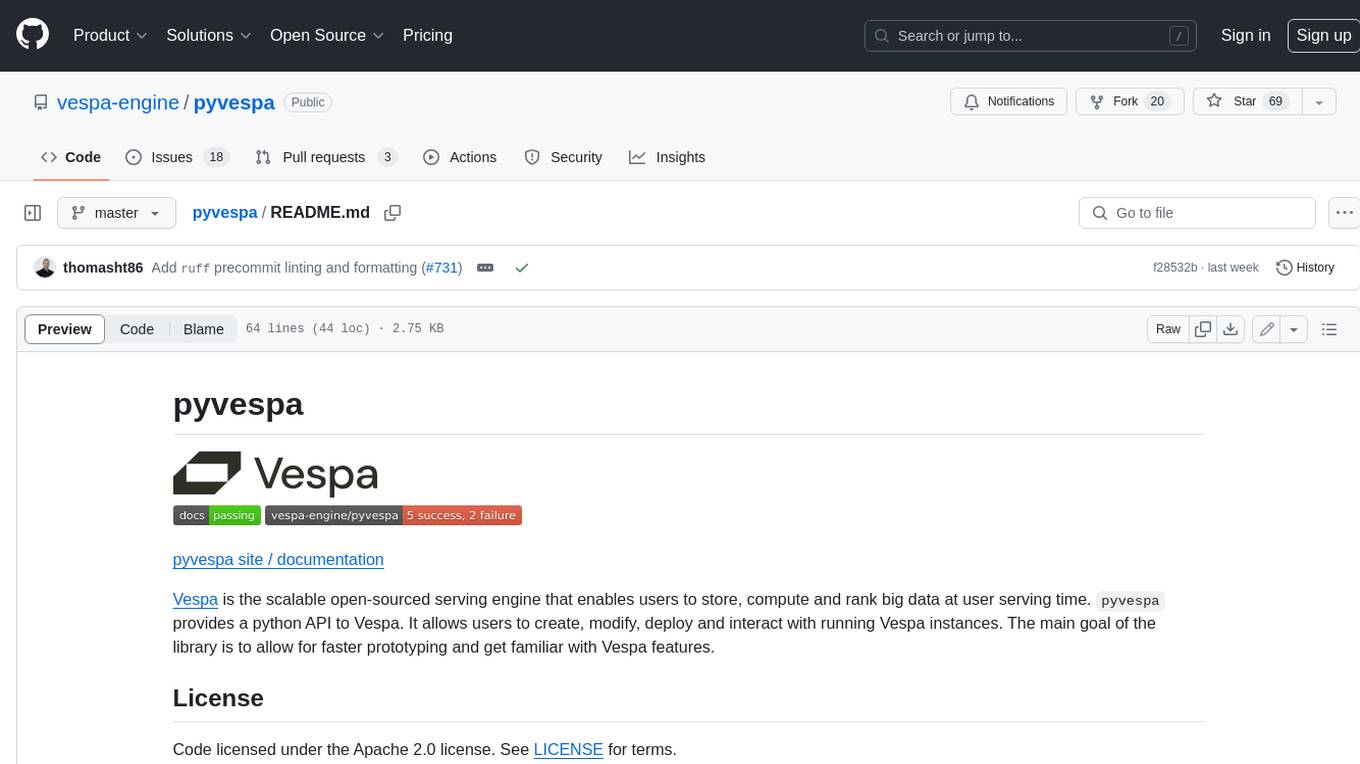
pyvespa
Vespa is a scalable open-source serving engine that enables users to store, compute, and rank big data at user serving time. Pyvespa provides a Python API to Vespa, allowing users to create, modify, deploy, and interact with running Vespa instances. The library's primary purpose is to facilitate faster prototyping and familiarization with Vespa features.
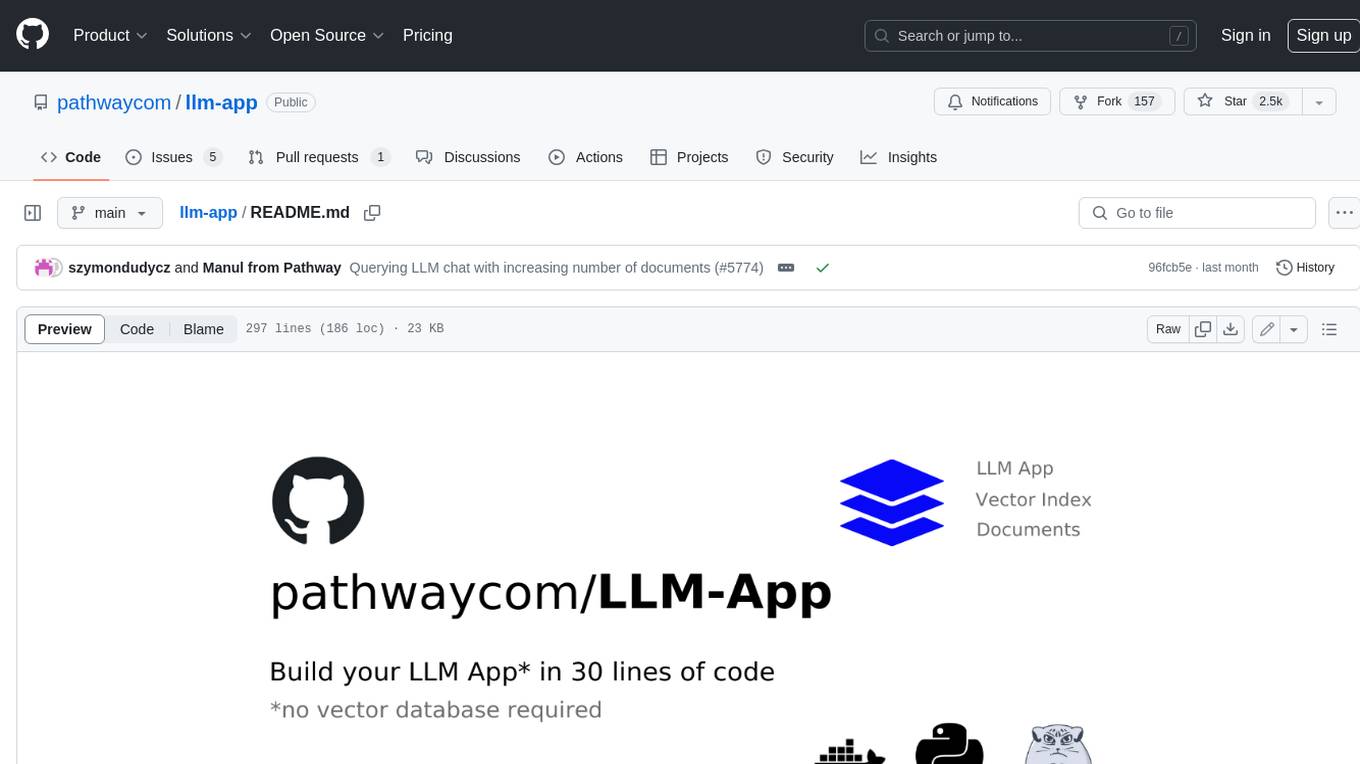
llm-app
Pathway's LLM (Large Language Model) Apps provide a platform to quickly deploy AI applications using the latest knowledge from data sources. The Python application examples in this repository are Docker-ready, exposing an HTTP API to the frontend. These apps utilize the Pathway framework for data synchronization, API serving, and low-latency data processing without the need for additional infrastructure dependencies. They connect to document data sources like S3, Google Drive, and Sharepoint, offering features like real-time data syncing, easy alert setup, scalability, monitoring, security, and unification of application logic.
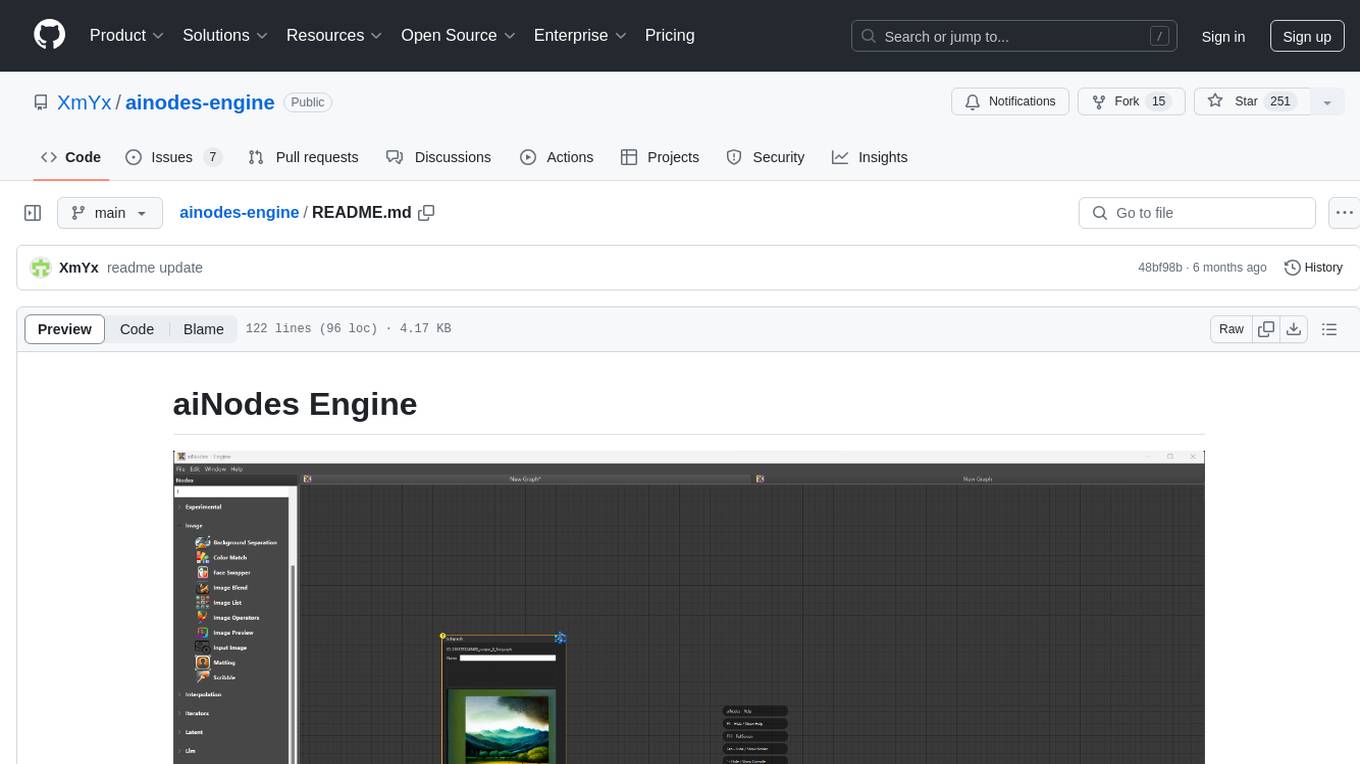
ainodes-engine
aiNodes Engine is a Python-based AI image/motion picture generator node engine with a live execution chain, python code editor node, and plug-in support. It offers full modularity, colored background drop, and easy node creation with IDE annotations. The project is officially supported by Deforum and incorporates various open-source projects like ComfyUI. It is designed to be flexible, with an Unreal-like execution chain, supporting features such as Deforum, Stable Diffusion, Upscalers, Kandinsky, ControlNet, and more. The engine allows for background separation, human matting/masking, compositing, drag and drop, subgraphs, and graph saving/loading from image metadata. It aims to provide a unique, controllable manner of working with a strict user-declared execution chain.
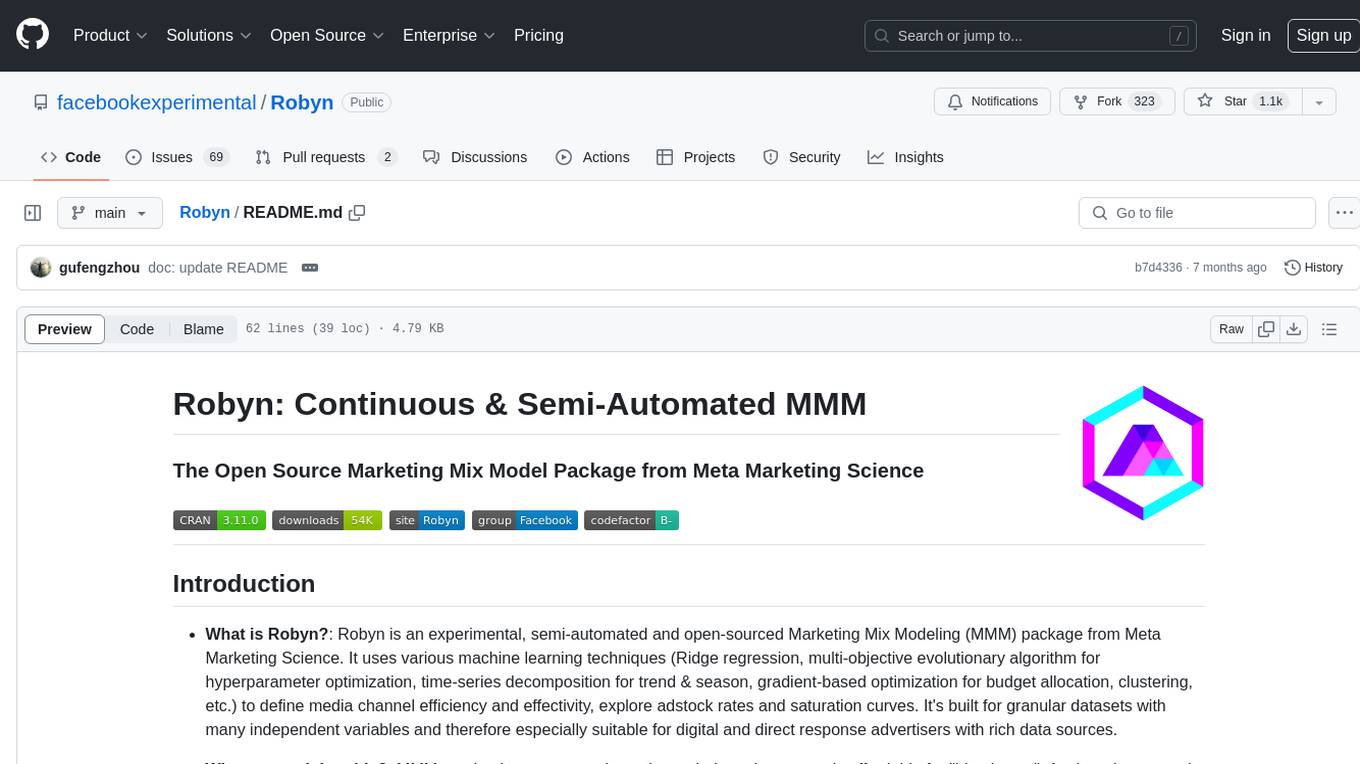
Robyn
Robyn is an experimental, semi-automated and open-sourced Marketing Mix Modeling (MMM) package from Meta Marketing Science. It uses various machine learning techniques to define media channel efficiency and effectivity, explore adstock rates and saturation curves. Built for granular datasets with many independent variables, especially suitable for digital and direct response advertisers with rich data sources. Aiming to democratize MMM, make it accessible for advertisers of all sizes, and contribute to the measurement landscape.
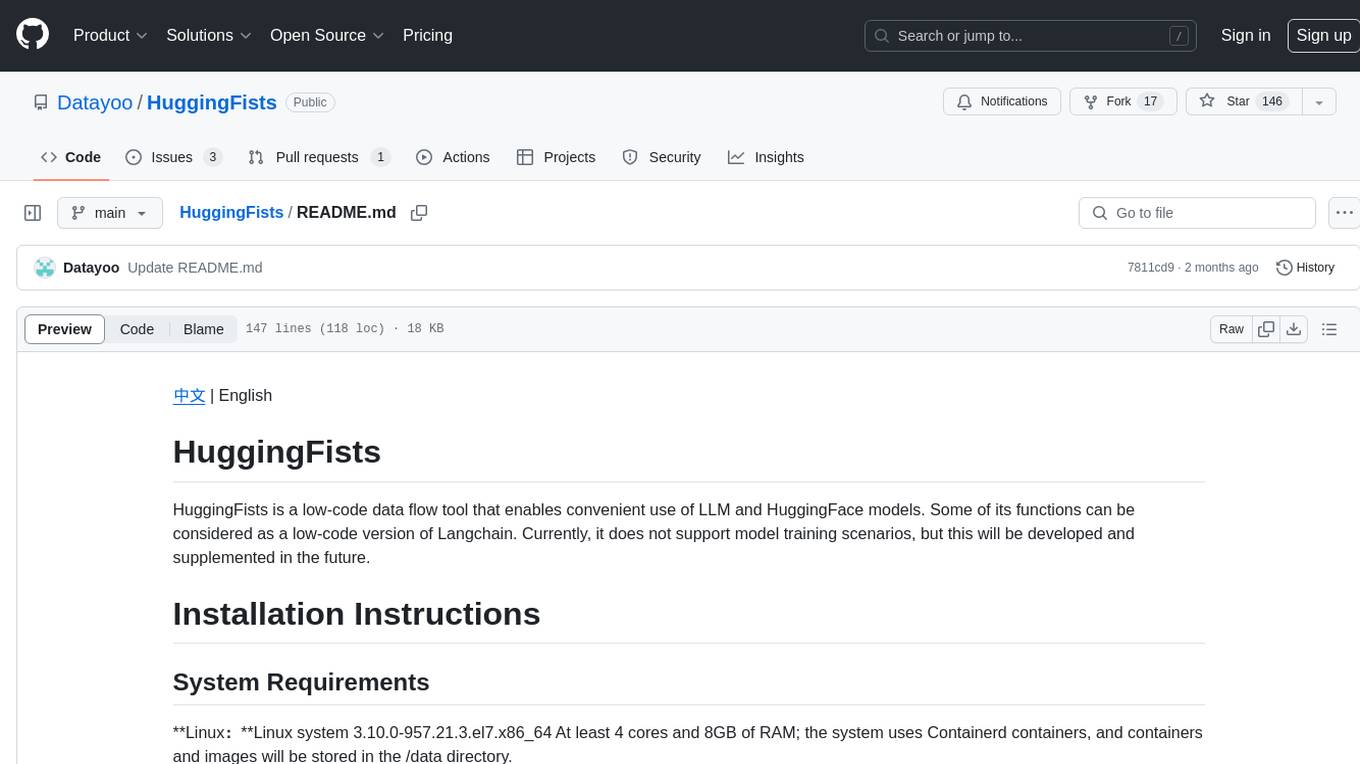
HuggingFists
HuggingFists is a low-code data flow tool that enables convenient use of LLM and HuggingFace models. It provides functionalities similar to Langchain, allowing users to design, debug, and manage data processing workflows, create and schedule workflow jobs, manage resources environment, and handle various data artifact resources. The tool also offers account management for users, allowing centralized management of data source accounts and API accounts. Users can access Hugging Face models through the Inference API or locally deployed models, as well as datasets on Hugging Face. HuggingFists supports breakpoint debugging, branch selection, function calls, workflow variables, and more to assist users in developing complex data processing workflows.
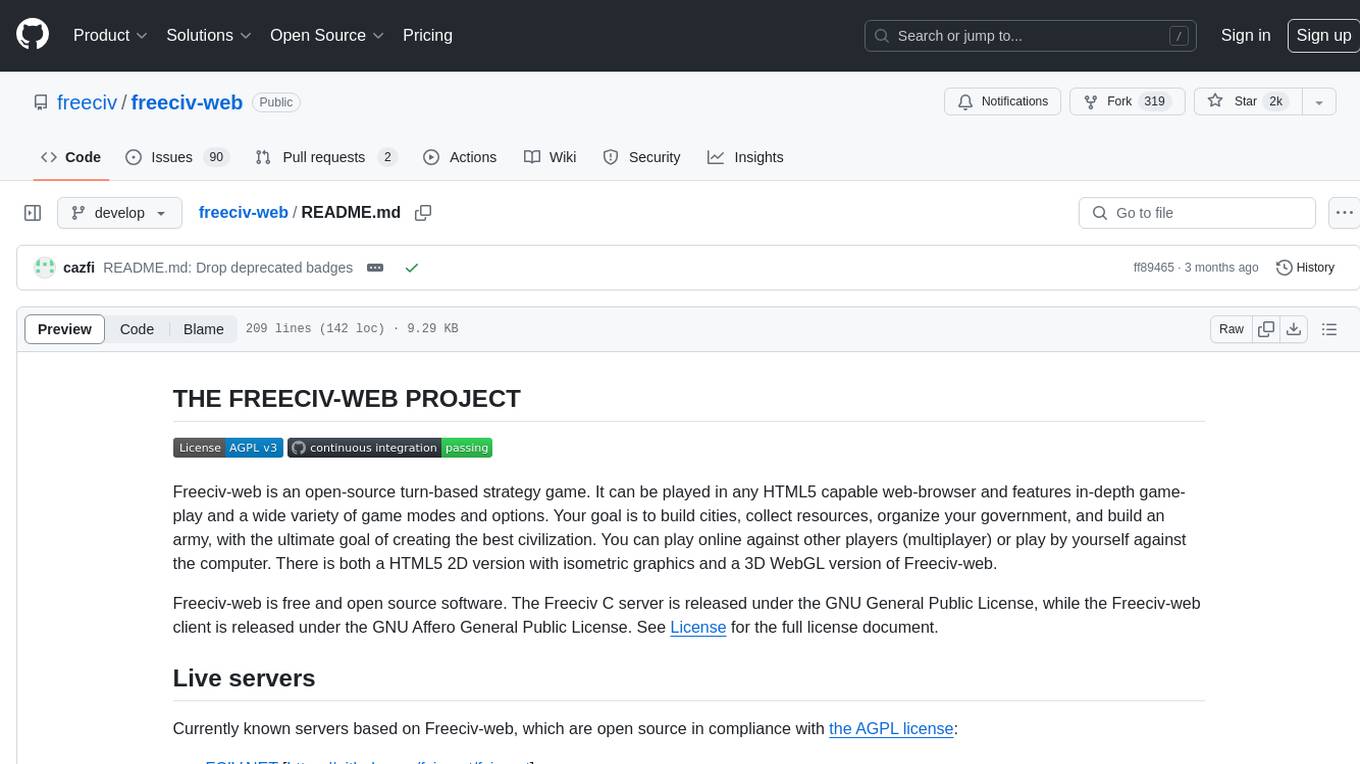
freeciv-web
Freeciv-web is an open-source turn-based strategy game that can be played in any HTML5 capable web-browser. It features in-depth gameplay, a wide variety of game modes and options. Players aim to build cities, collect resources, organize their government, and build an army to create the best civilization. The game offers both multiplayer and single-player modes, with a 2D version with isometric graphics and a 3D WebGL version available. The project consists of components like Freeciv-web, Freeciv C server, Freeciv-proxy, Publite2, and pbem for play-by-email support. Developers interested in contributing can check the GitHub issues and TODO file for tasks to work on.
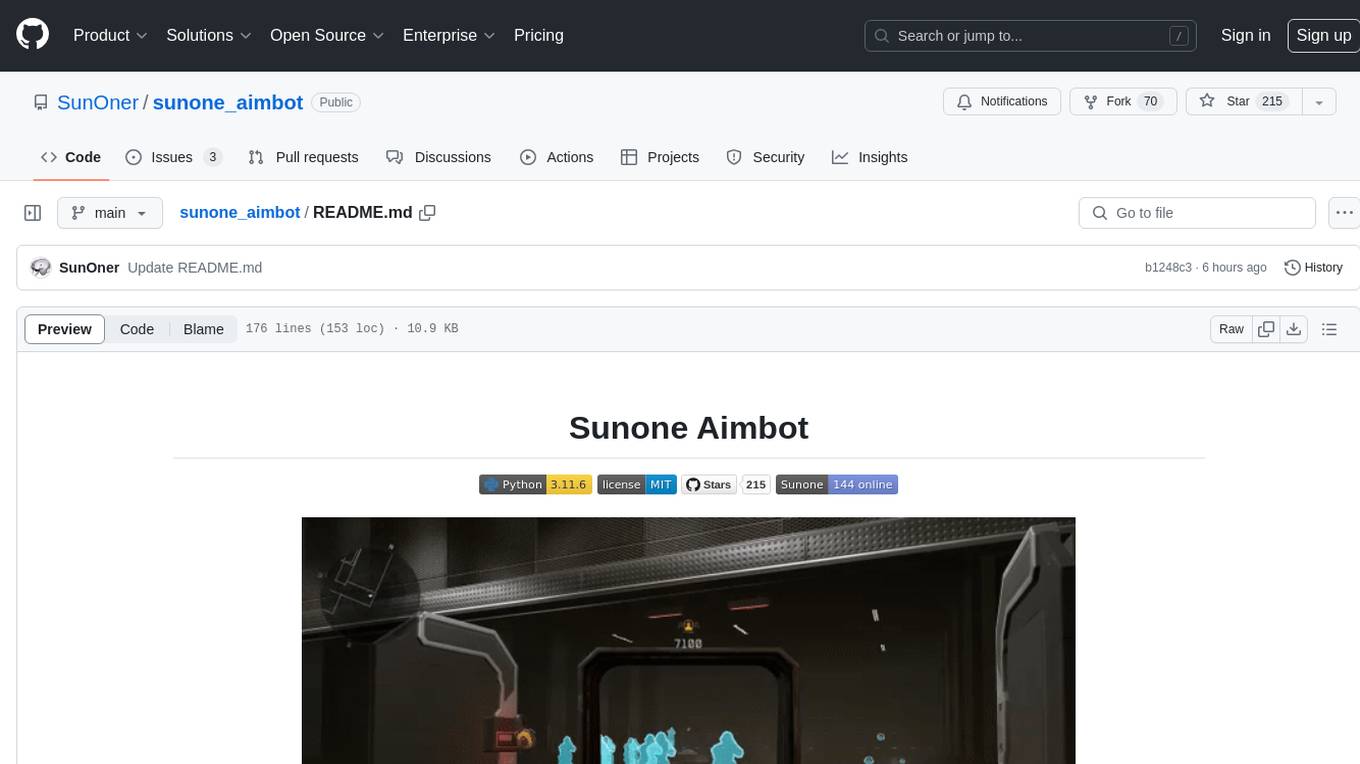
sunone_aimbot
Sunone Aimbot is an AI-powered aim bot for first-person shooter games. It leverages YOLOv8 and YOLOv10 models, PyTorch, and various tools to automatically target and aim at enemies within the game. The AI model has been trained on more than 30,000 images from popular first-person shooter games like Warface, Destiny 2, Battlefield 2042, CS:GO, Fortnite, The Finals, CS2, and more. The aimbot can be configured through the `config.ini` file to adjust various settings related to object search, capture methods, aiming behavior, hotkeys, mouse settings, shooting options, Arduino integration, AI model parameters, overlay display, debug window, and more. Users are advised to follow specific recommendations to optimize performance and avoid potential issues while using the aimbot.
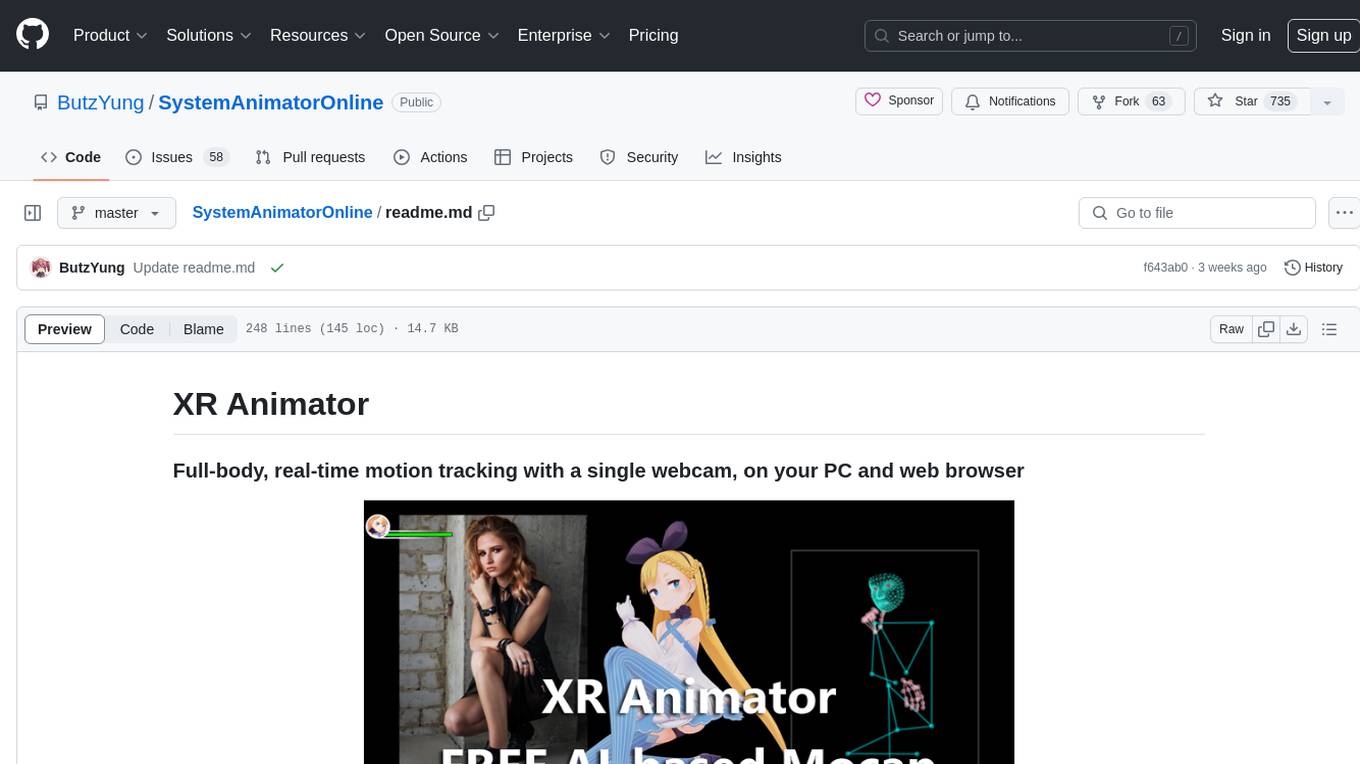
SystemAnimatorOnline
XR Animator is a video/webcam-based AI motion capture application designed for VTubing and the metaverse era. It uses machine learning solutions to detect 3D poses from a live webcam video, driving a 3D avatar as if controlled by the user's body. It supports full-body AI motion tracking, face tracking, and various XR/3D purposes. The tool can be used for VTubing, recording mocap motion, exporting motions to different formats, customizing backgrounds and scenes, and animating 3D models in other applications. It also supports AR on Android Chrome browser, AR selfie feature, and has relatively low system requirements for wide device compatibility.
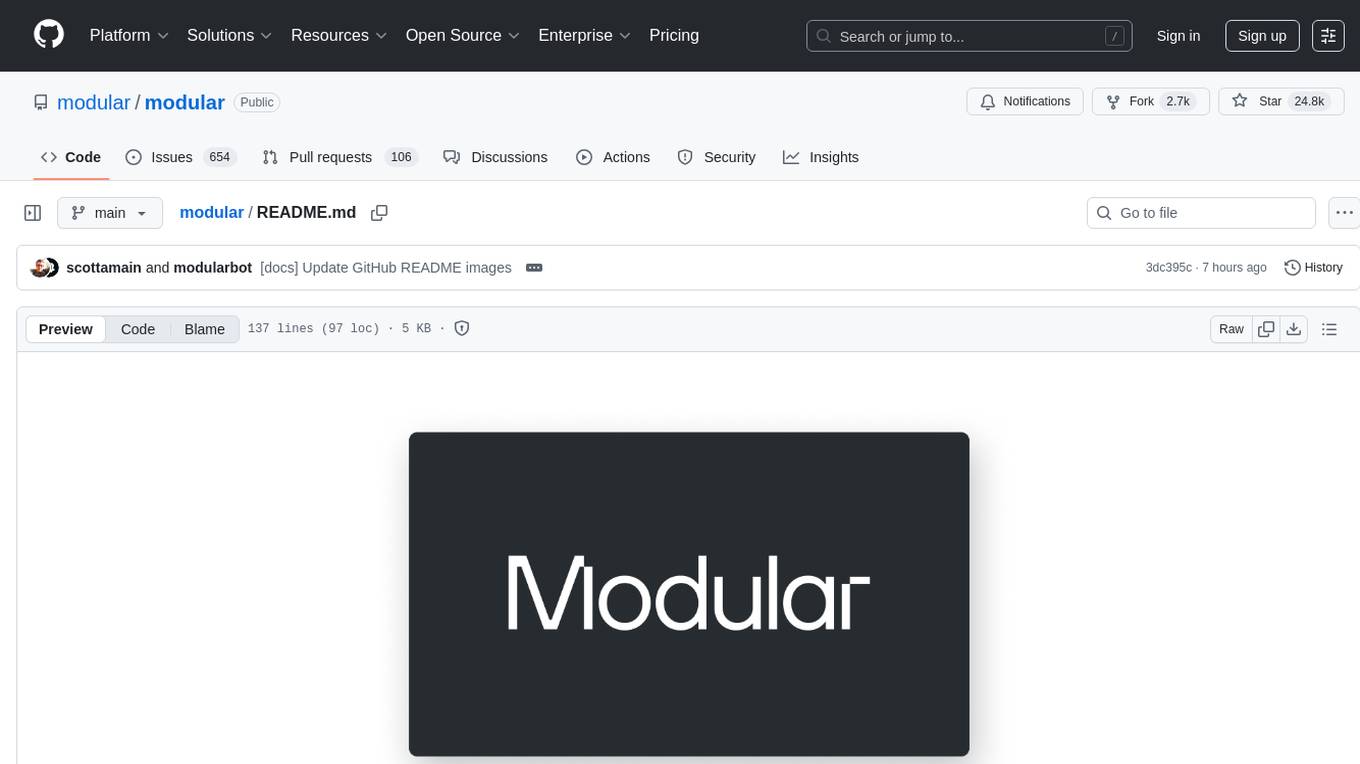
modular
The Modular Platform is a unified suite of AI libraries and tools designed for AI development and deployment. It abstracts hardware complexity to enable running popular open models with high GPU and CPU performance without code changes. The repository contains over 450,000 lines of code from 6000+ contributors, making it one of the largest open-source repositories for CPU and GPU kernels. Key components include the Mojo standard library, MAX GPU and CPU kernels, MAX inference server, MAX model pipelines, and code examples. The repository has main and stable branches for nightly builds and stable releases, respectively. Contributions are accepted for the Mojo standard library, MAX AI kernels, code examples, and Mojo docs.
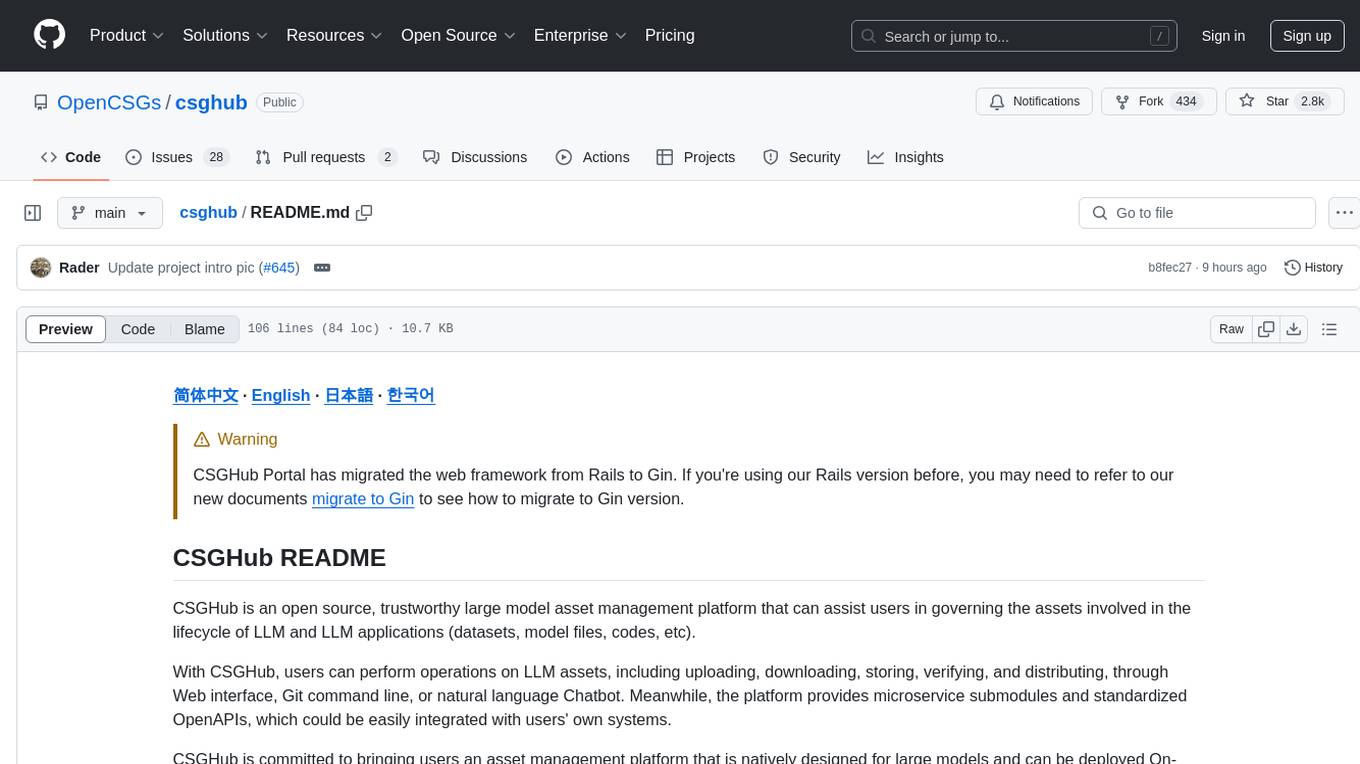
csghub
CSGHub is an open source platform for managing large model assets, including datasets, model files, and codes. It offers functionalities similar to a privatized Huggingface, managing assets in a manner akin to how OpenStack Glance manages virtual machine images. Users can perform operations such as uploading, downloading, storing, verifying, and distributing assets through various interfaces. The platform provides microservice submodules and standardized OpenAPIs for easy integration with users' systems. CSGHub is designed for large models and can be deployed On-Premise for offline operation.
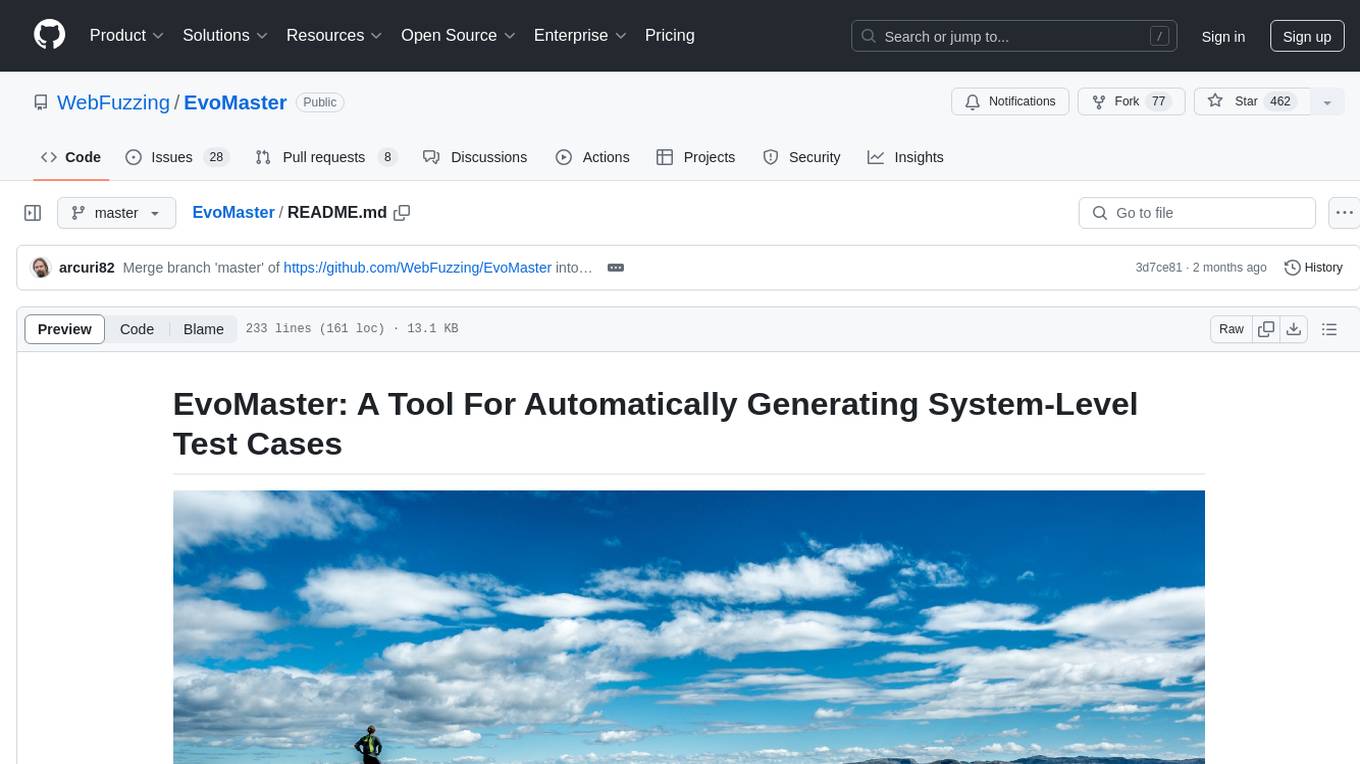
EvoMaster
EvoMaster is an open-source AI-driven tool that automatically generates system-level test cases for web/enterprise applications. It uses an Evolutionary Algorithm and Dynamic Program Analysis to evolve test cases, maximizing code coverage and fault detection. The tool supports REST, GraphQL, and RPC APIs, with whitebox testing for JVM-compiled languages. It generates JUnit tests, detects faults, handles SQL databases, and supports authentication. EvoMaster has been funded by the European Research Council and the Research Council of Norway.
For similar tasks

AIS-catcher-for-Android
AIS-catcher for Android is a multi-platform AIS receiver app that transforms your Android device into a dual channel AIS receiver. It directly accesses a Software Defined Radio USB device to pick up AIS signals from nearby vessels, visualizing them on a built-in map or sending messages via UDP to plotting apps. The app requires a RTL-SDR dongle or an AirSpy device, a simple antenna, an Android device with USB connector, and an OTG cable. It is designed for research and educational purposes under the GPL license, with no warranty. Users are responsible for prudent use and compliance with local regulations. The app is not intended for navigation or safety purposes.
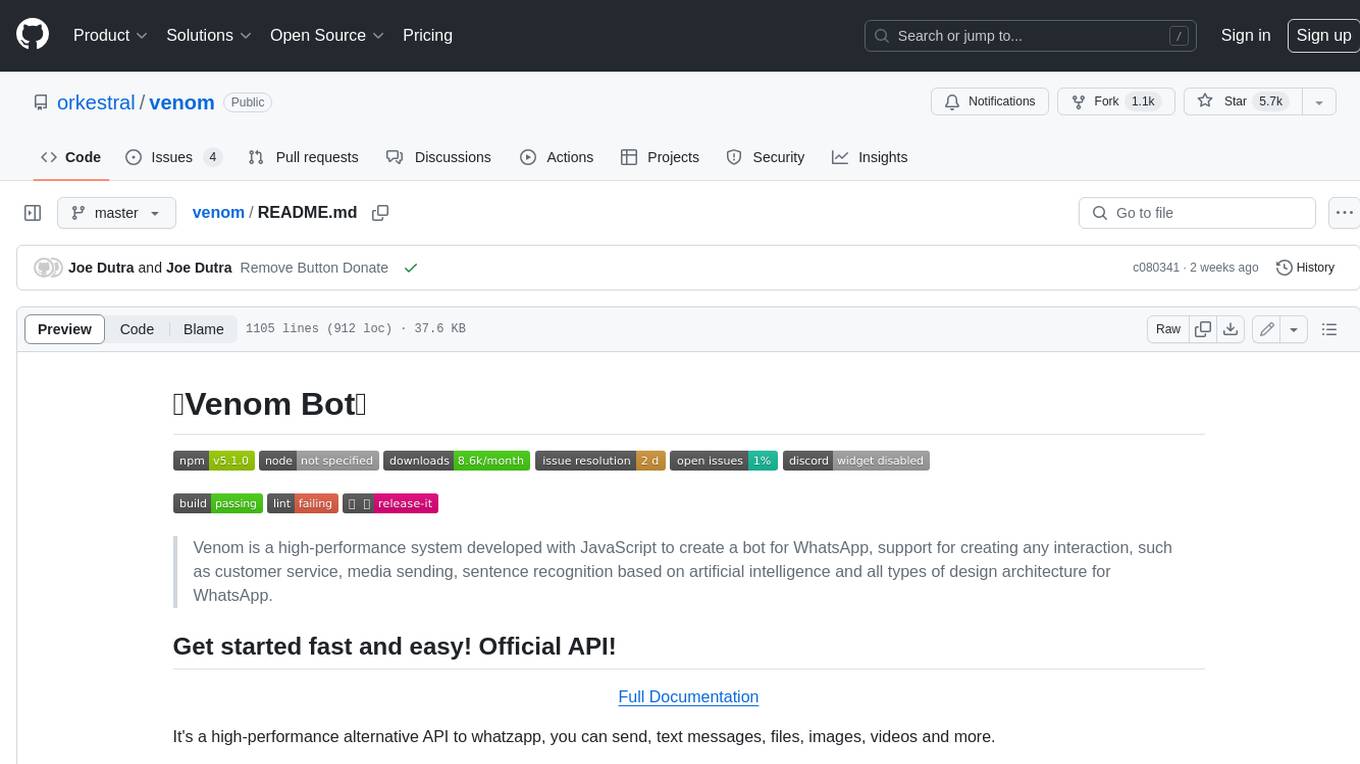
venom
Venom is a high-performance system developed with JavaScript to create a bot for WhatsApp, support for creating any interaction, such as customer service, media sending, sentence recognition based on artificial intelligence and all types of design architecture for WhatsApp.
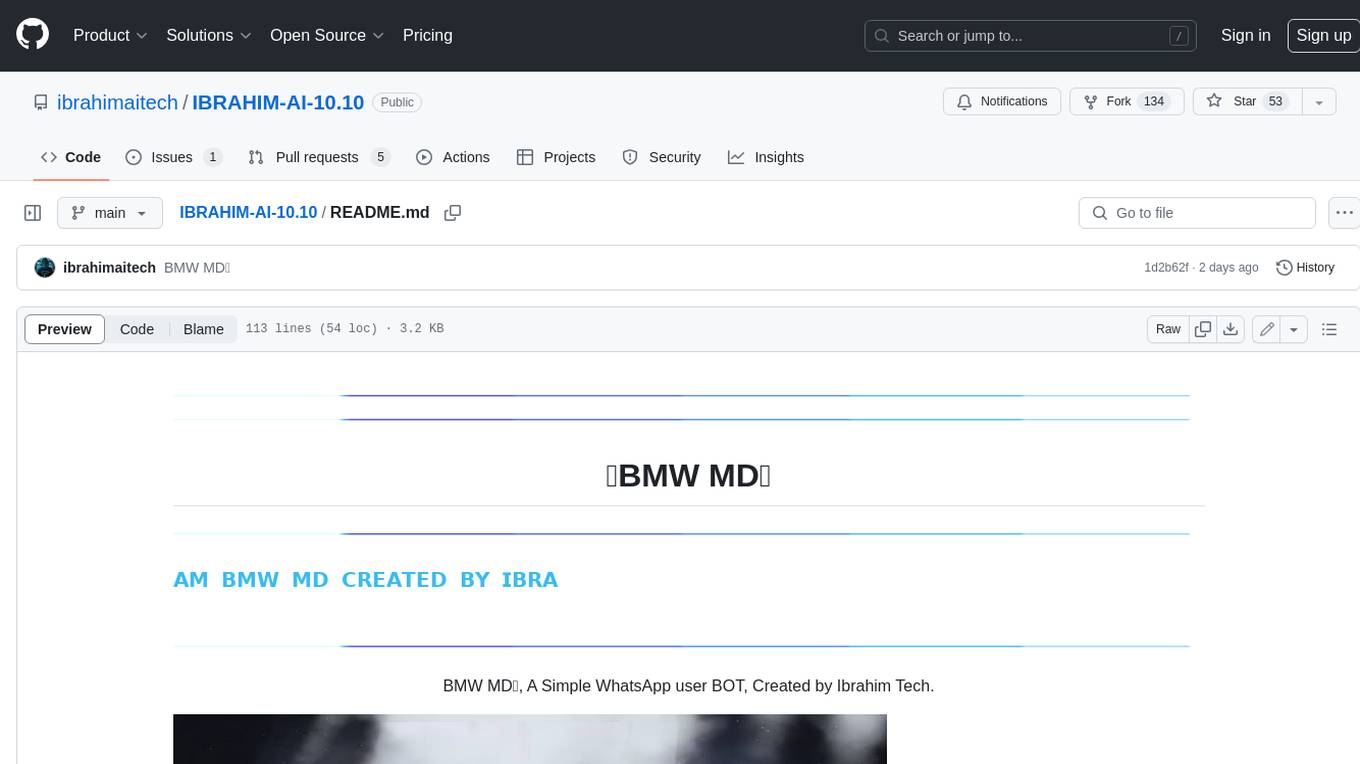
IBRAHIM-AI-10.10
BMW MD is a simple WhatsApp user BOT created by Ibrahim Tech. It allows users to scan pairing codes or QR codes to connect to WhatsApp and deploy the bot on Heroku. The bot can be used to perform various tasks such as sending messages, receiving messages, and managing contacts. It is released under the MIT License and contributions are welcome.
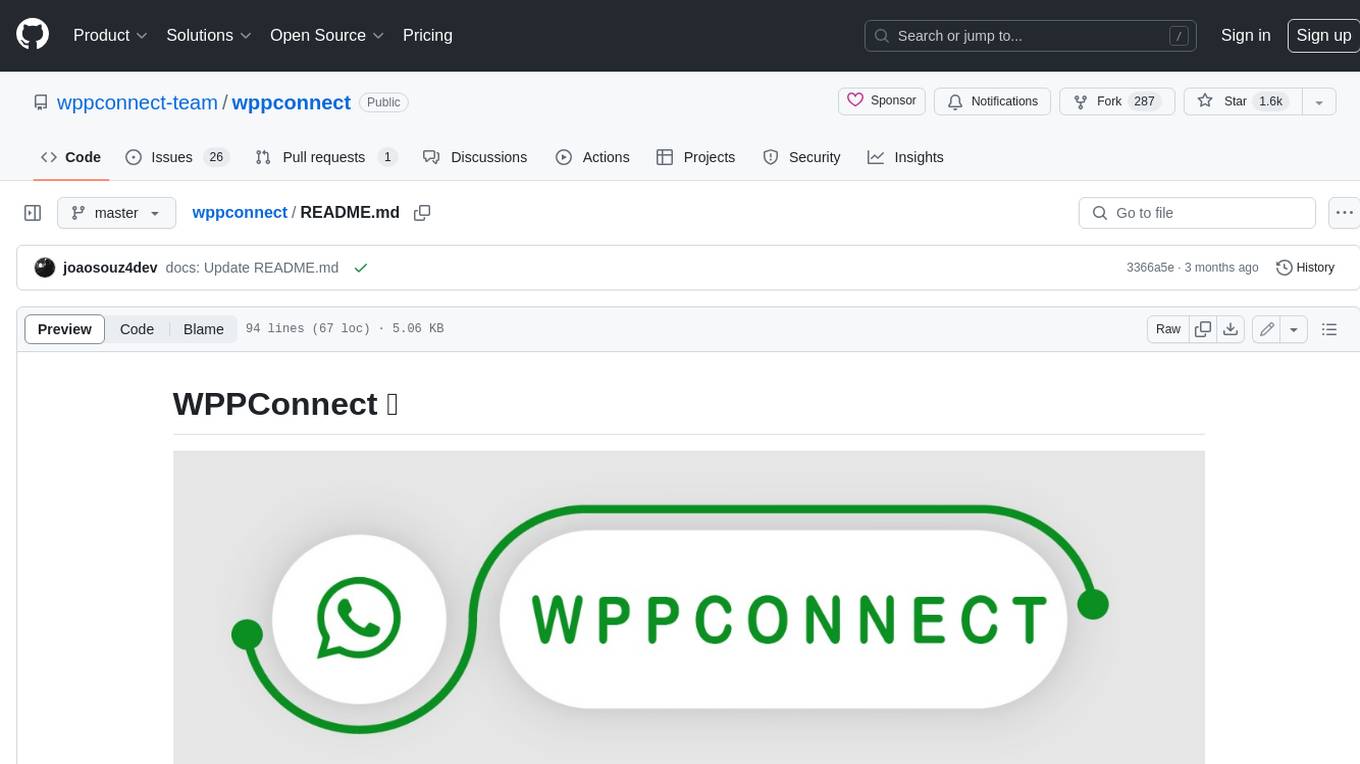
wppconnect
WPPConnect is an open source project developed by the JavaScript community with the aim of exporting functions from WhatsApp Web to the node, which can be used to support the creation of any interaction, such as customer service, media sending, intelligence recognition based on phrases artificial and many other things.
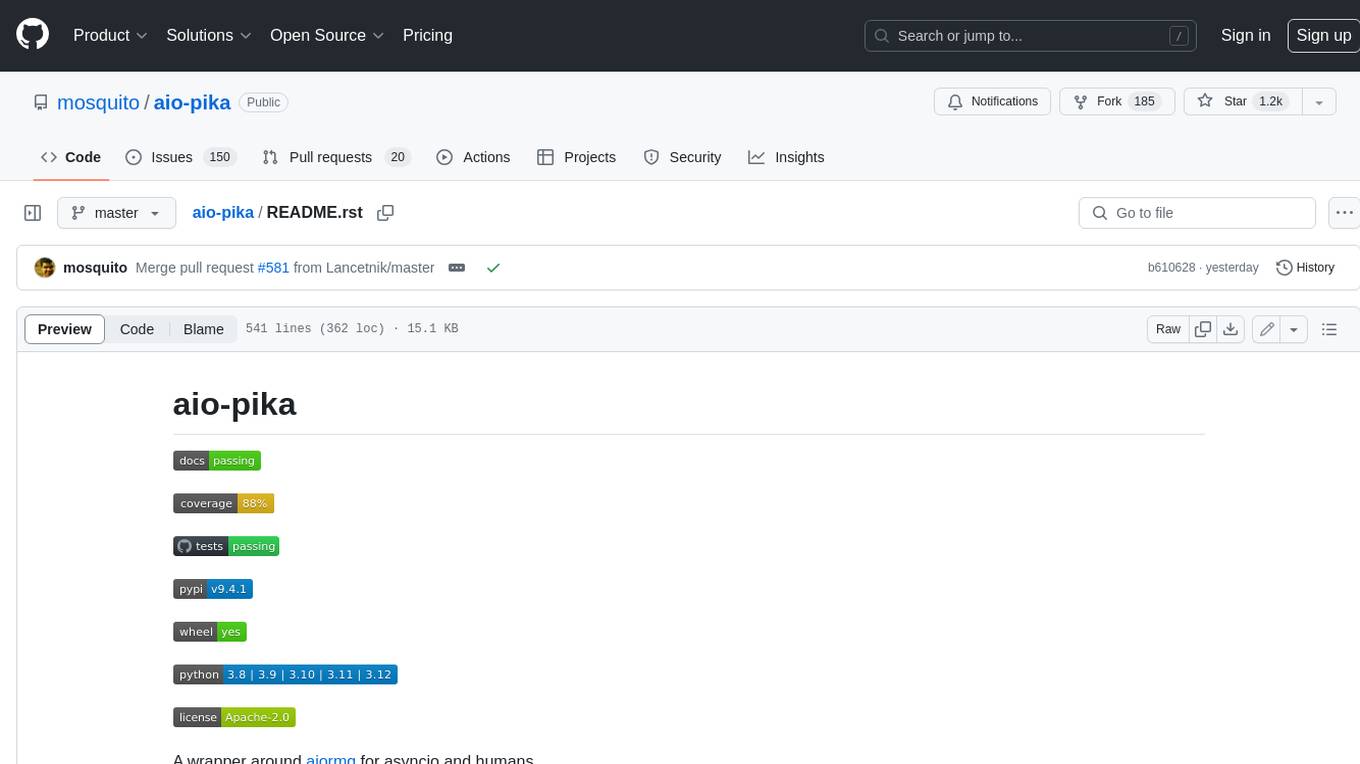
aio-pika
Aio-pika is a wrapper around aiormq for asyncio and humans. It provides a completely asynchronous API, object-oriented API, transparent auto-reconnects with complete state recovery, Python 3.7+ compatibility, transparent publisher confirms support, transactions support, and complete type-hints coverage.
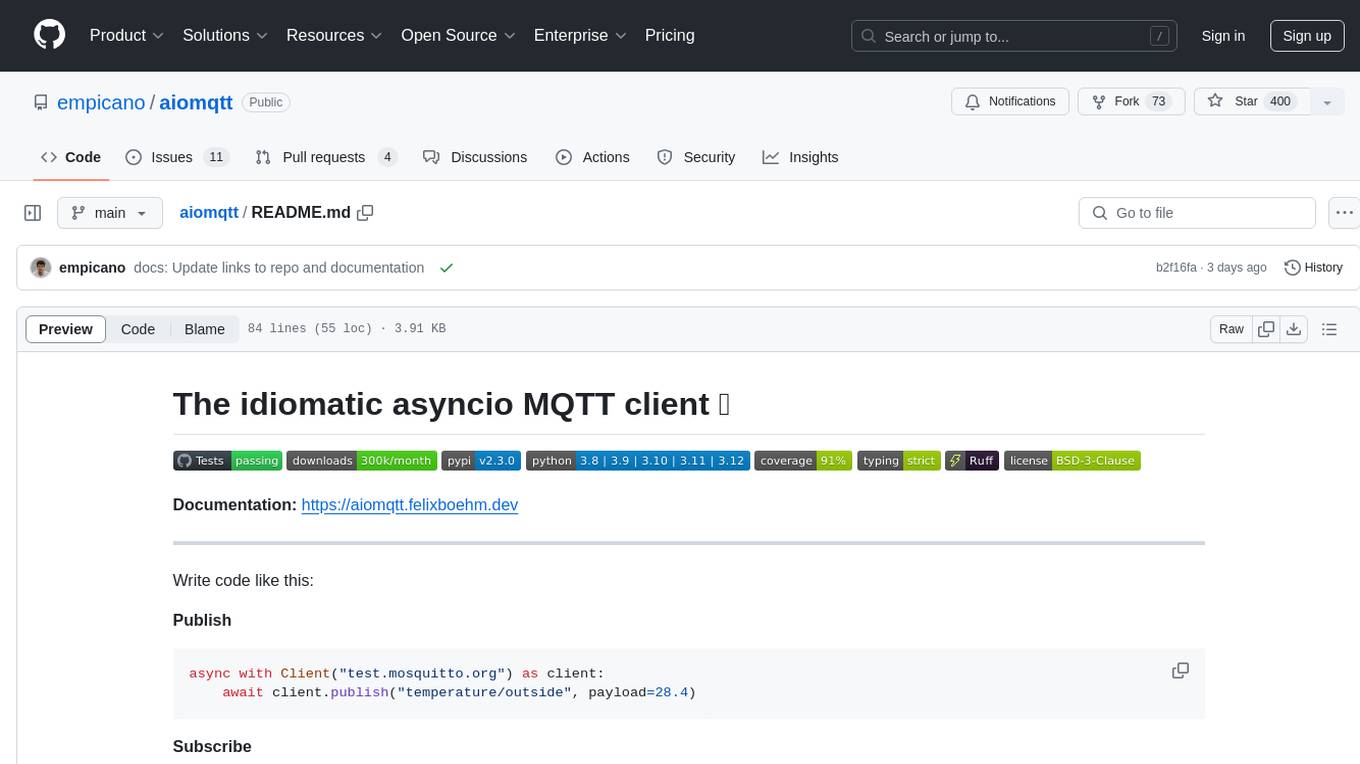
aiomqtt
aiomqtt is an idiomatic asyncio MQTT client that allows users to interact with MQTT brokers using asyncio in Python. It eliminates the need for callbacks and return codes, providing a more streamlined experience. The tool supports MQTT versions 5.0, 3.1.1, and 3.1, and offers graceful disconnection handling. It is fully type-hinted, making it easier to work with. Users can publish and subscribe to MQTT topics with ease, making it a versatile tool for MQTT communication in Python.
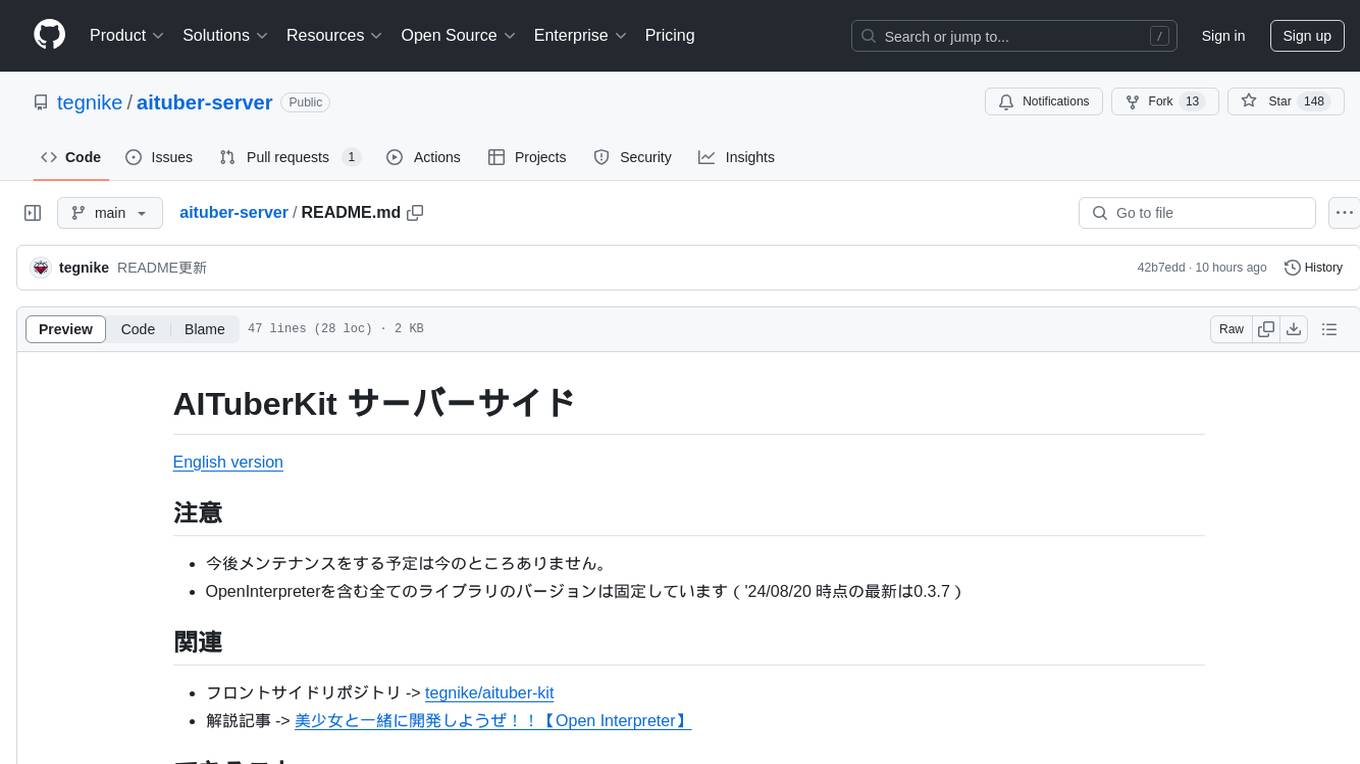
aituber-server
AITuberKit server-side is a tool that allows users to receive messages via WebSocket and obtain responses from Open Interpreter. Users can also send files to the server for storage and issue commands to Open Interpreter. The tool is designed for WebSocket operation and provides a default connection URL of `ws://127.0.0.1:8000/ws`. It supports debugging in VSCode with DEBUG_MODE=1. The tool is licensed under KillianLucas/open-interpreter and includes a guide on how to use Open Interpreter.
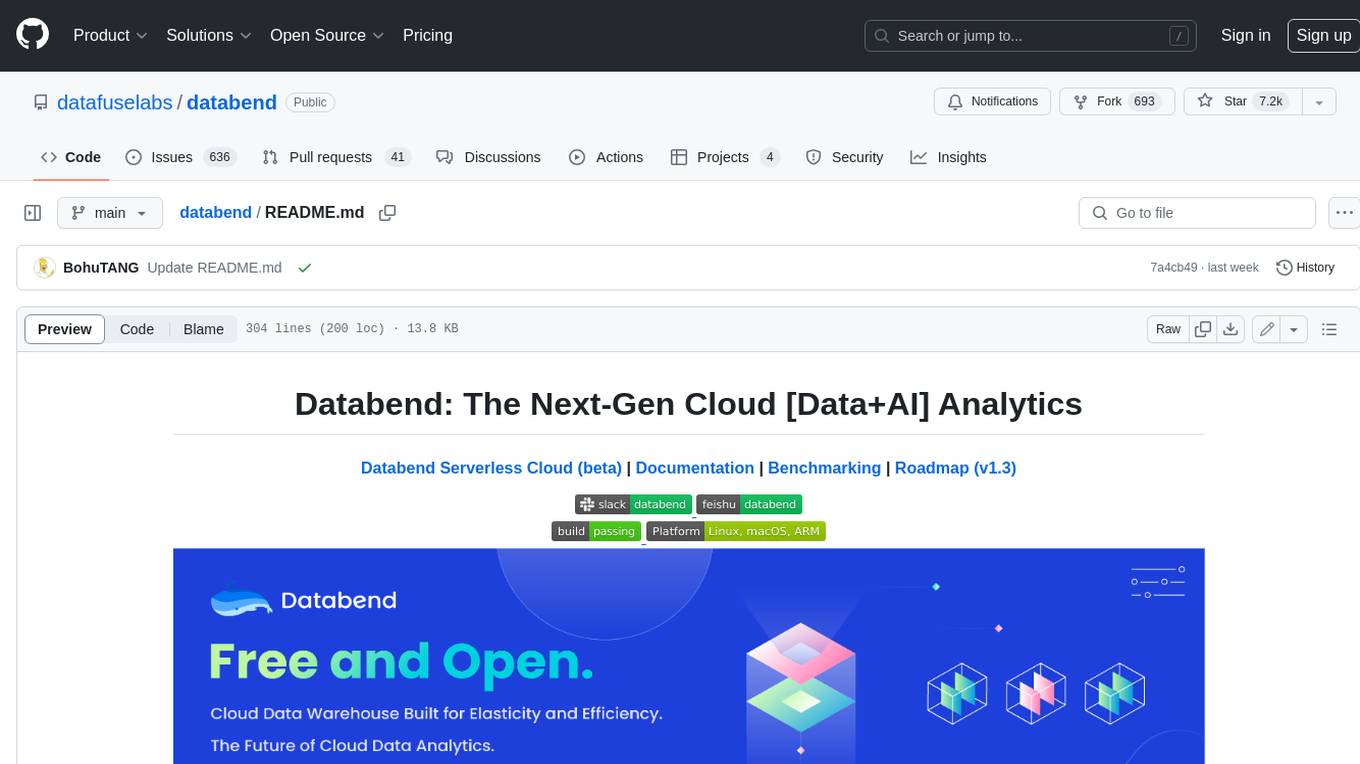
databend
Databend is an open-source cloud data warehouse that serves as a cost-effective alternative to Snowflake. With its focus on fast query execution and data ingestion, it's designed for complex analysis of the world's largest datasets.
For similar jobs
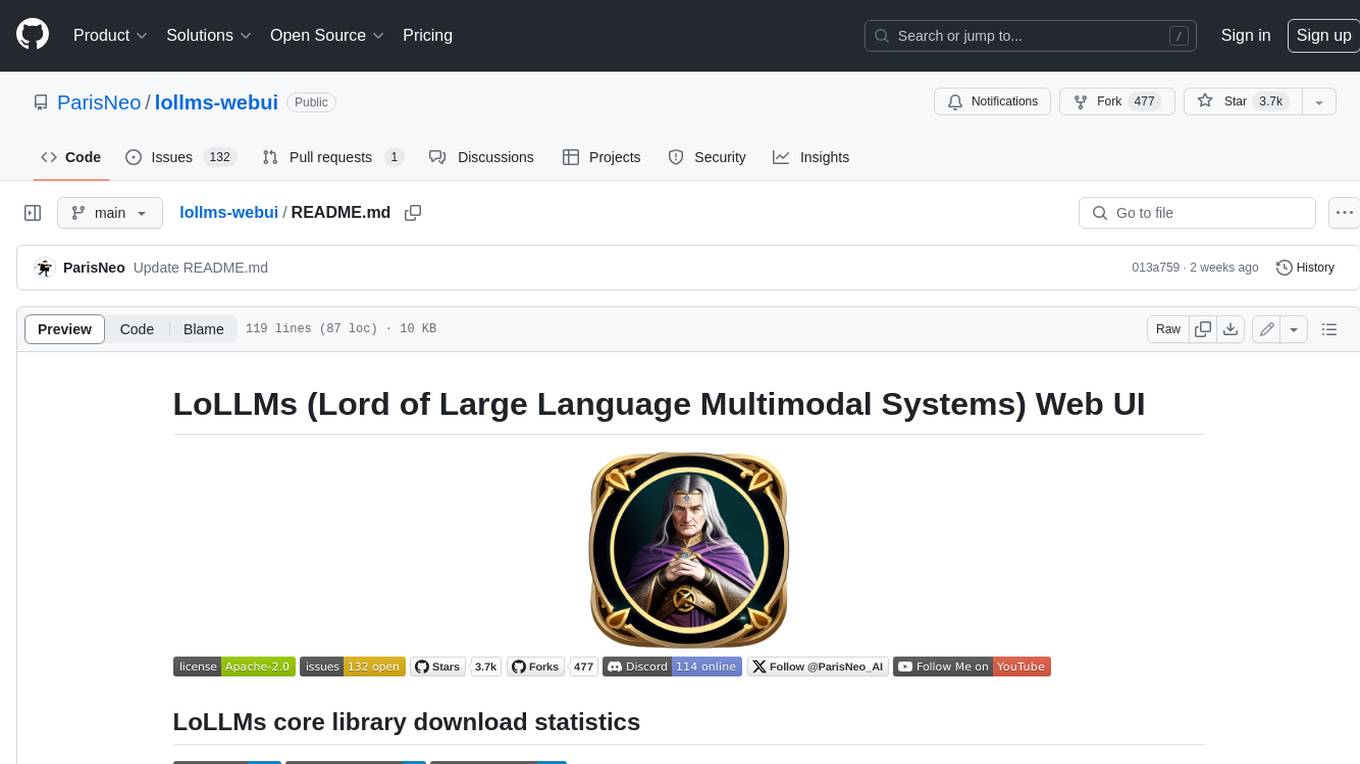
lollms-webui
LoLLMs WebUI (Lord of Large Language Multimodal Systems: One tool to rule them all) is a user-friendly interface to access and utilize various LLM (Large Language Models) and other AI models for a wide range of tasks. With over 500 AI expert conditionings across diverse domains and more than 2500 fine tuned models over multiple domains, LoLLMs WebUI provides an immediate resource for any problem, from car repair to coding assistance, legal matters, medical diagnosis, entertainment, and more. The easy-to-use UI with light and dark mode options, integration with GitHub repository, support for different personalities, and features like thumb up/down rating, copy, edit, and remove messages, local database storage, search, export, and delete multiple discussions, make LoLLMs WebUI a powerful and versatile tool.
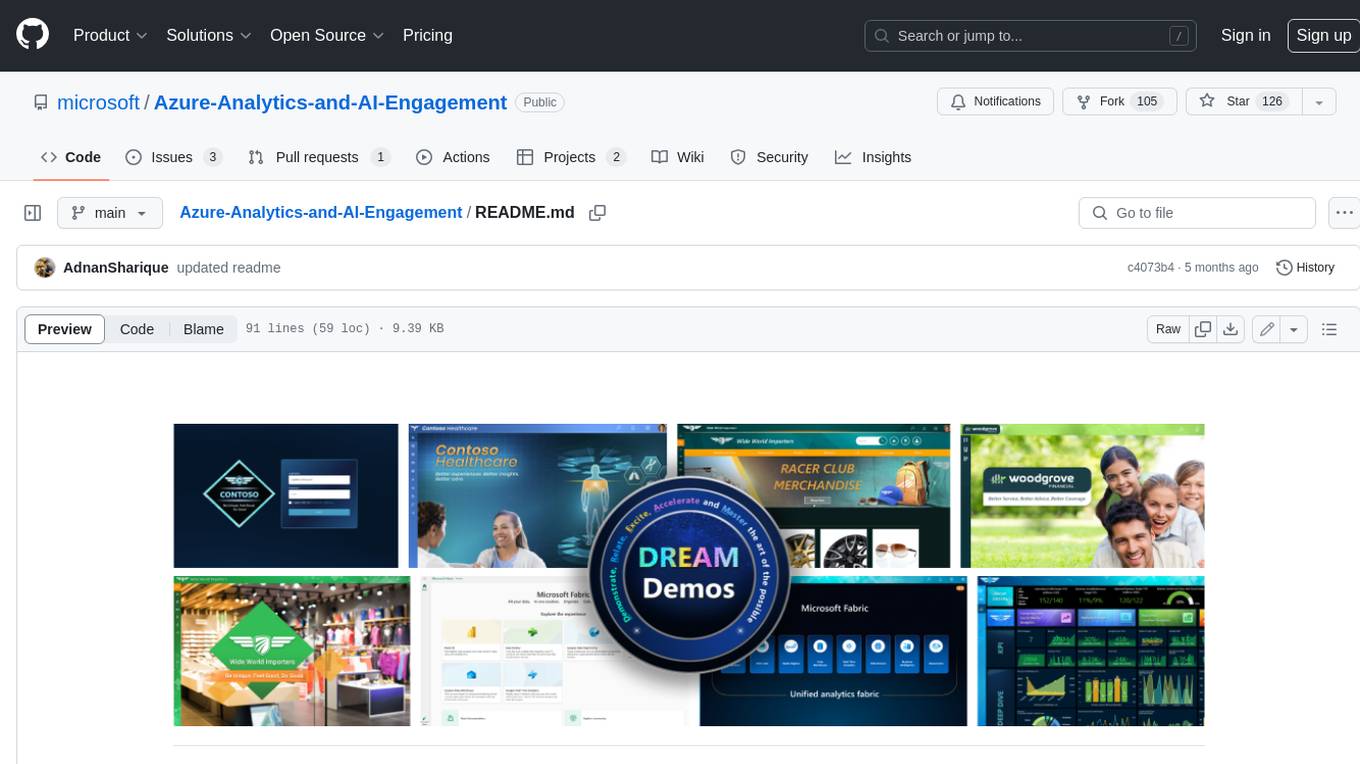
Azure-Analytics-and-AI-Engagement
The Azure-Analytics-and-AI-Engagement repository provides packaged Industry Scenario DREAM Demos with ARM templates (Containing a demo web application, Power BI reports, Synapse resources, AML Notebooks etc.) that can be deployed in a customer’s subscription using the CAPE tool within a matter of few hours. Partners can also deploy DREAM Demos in their own subscriptions using DPoC.
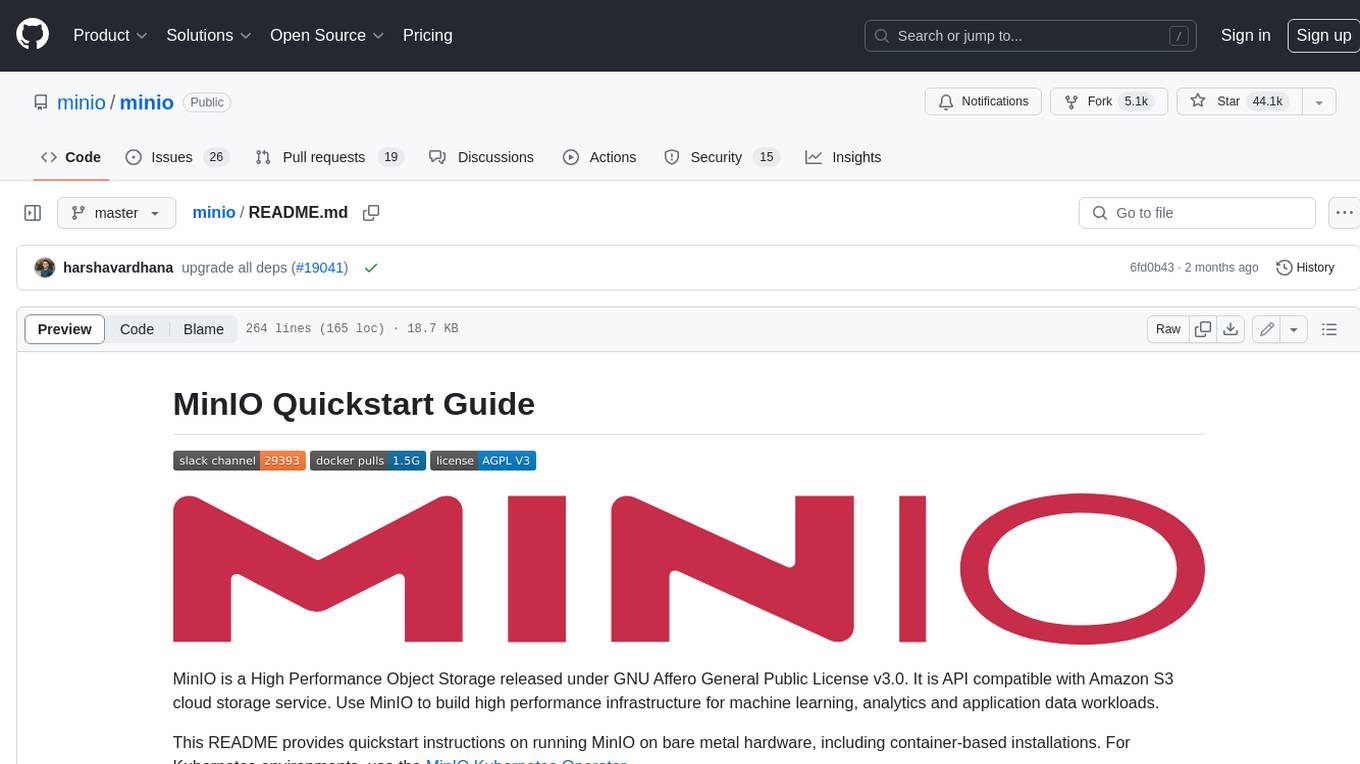
minio
MinIO is a High Performance Object Storage released under GNU Affero General Public License v3.0. It is API compatible with Amazon S3 cloud storage service. Use MinIO to build high performance infrastructure for machine learning, analytics and application data workloads.
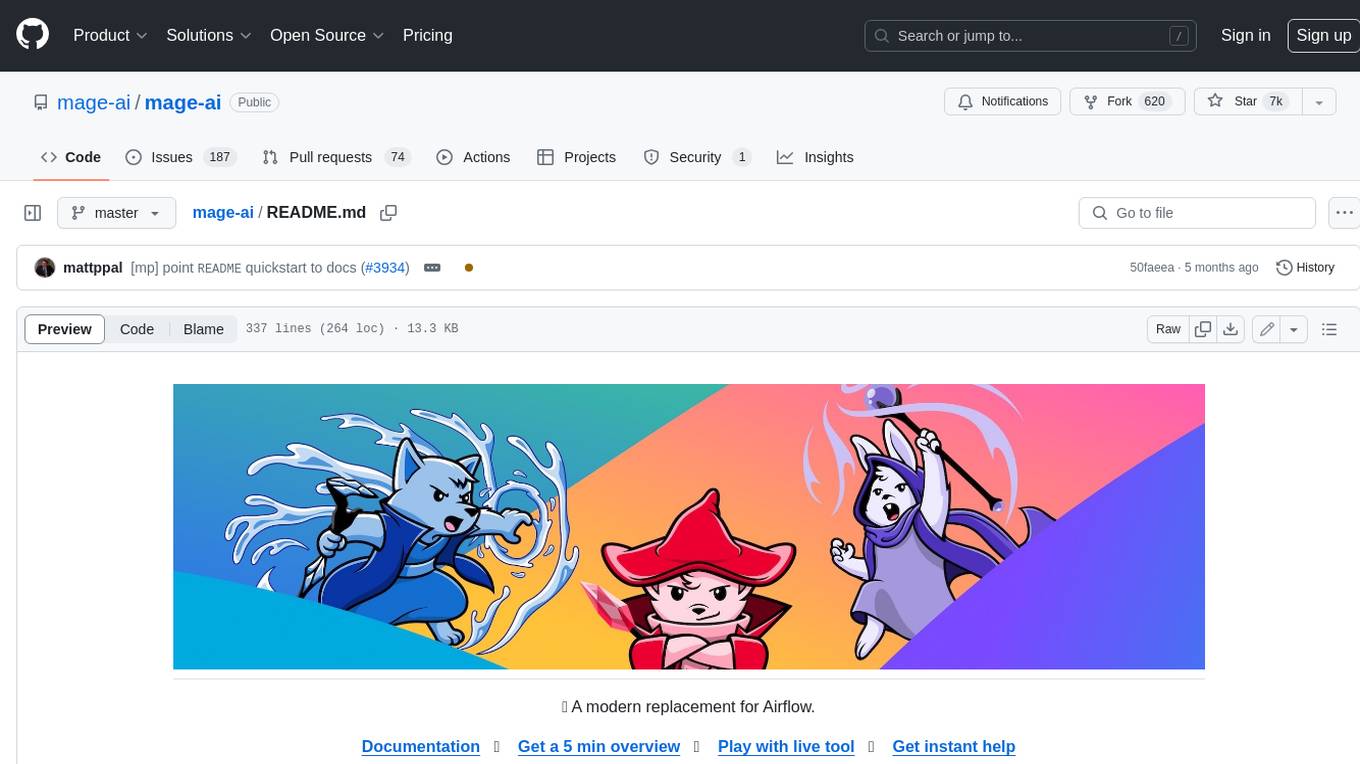
mage-ai
Mage is an open-source data pipeline tool for transforming and integrating data. It offers an easy developer experience, engineering best practices built-in, and data as a first-class citizen. Mage makes it easy to build, preview, and launch data pipelines, and provides observability and scaling capabilities. It supports data integrations, streaming pipelines, and dbt integration.

AiTreasureBox
AiTreasureBox is a versatile AI tool that provides a collection of pre-trained models and algorithms for various machine learning tasks. It simplifies the process of implementing AI solutions by offering ready-to-use components that can be easily integrated into projects. With AiTreasureBox, users can quickly prototype and deploy AI applications without the need for extensive knowledge in machine learning or deep learning. The tool covers a wide range of tasks such as image classification, text generation, sentiment analysis, object detection, and more. It is designed to be user-friendly and accessible to both beginners and experienced developers, making AI development more efficient and accessible to a wider audience.

tidb
TiDB is an open-source distributed SQL database that supports Hybrid Transactional and Analytical Processing (HTAP) workloads. It is MySQL compatible and features horizontal scalability, strong consistency, and high availability.

airbyte
Airbyte is an open-source data integration platform that makes it easy to move data from any source to any destination. With Airbyte, you can build and manage data pipelines without writing any code. Airbyte provides a library of pre-built connectors that make it easy to connect to popular data sources and destinations. You can also create your own connectors using Airbyte's no-code Connector Builder or low-code CDK. Airbyte is used by data engineers and analysts at companies of all sizes to build and manage their data pipelines.

labelbox-python
Labelbox is a data-centric AI platform for enterprises to develop, optimize, and use AI to solve problems and power new products and services. Enterprises use Labelbox to curate data, generate high-quality human feedback data for computer vision and LLMs, evaluate model performance, and automate tasks by combining AI and human-centric workflows. The academic & research community uses Labelbox for cutting-edge AI research.










